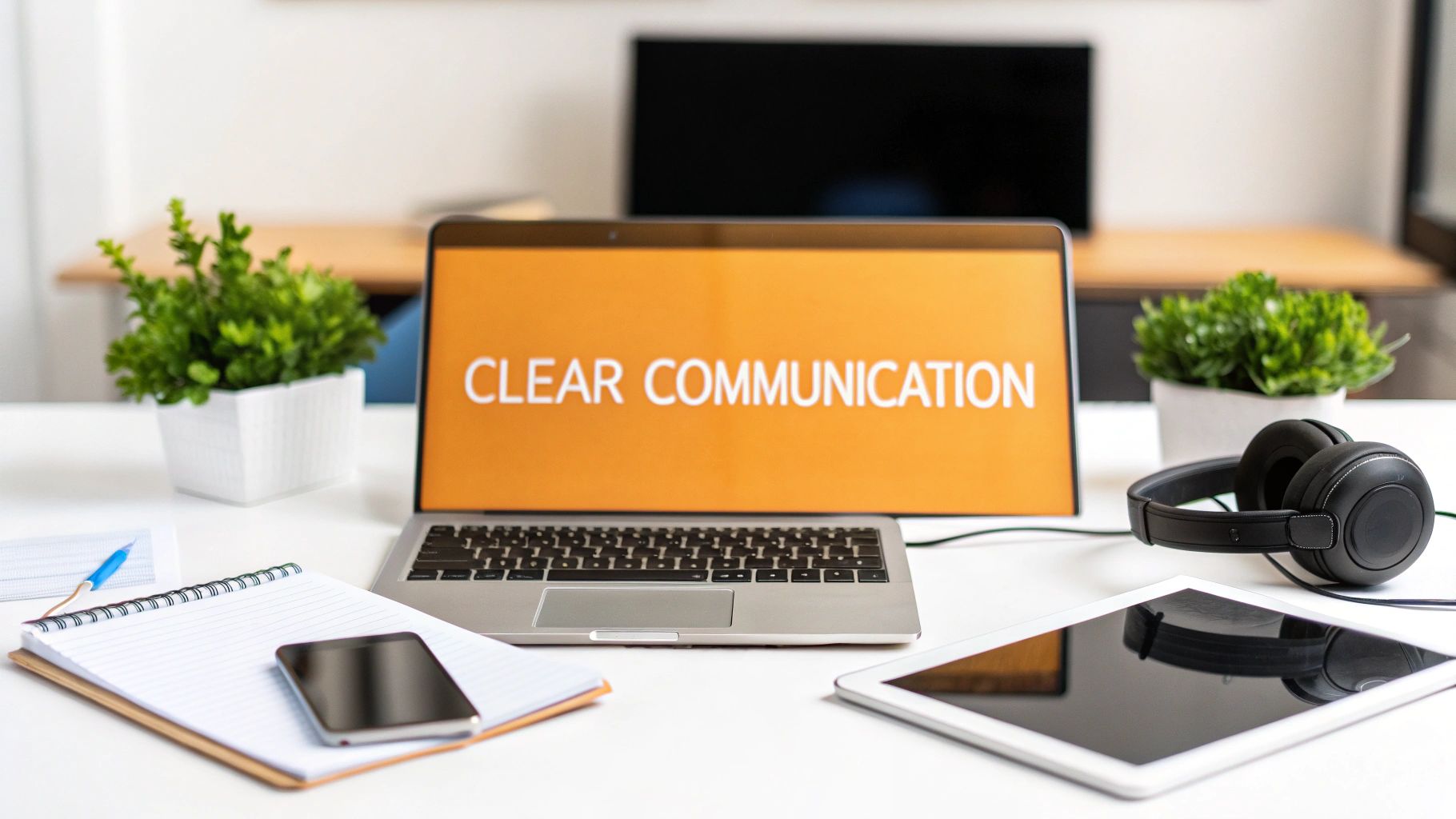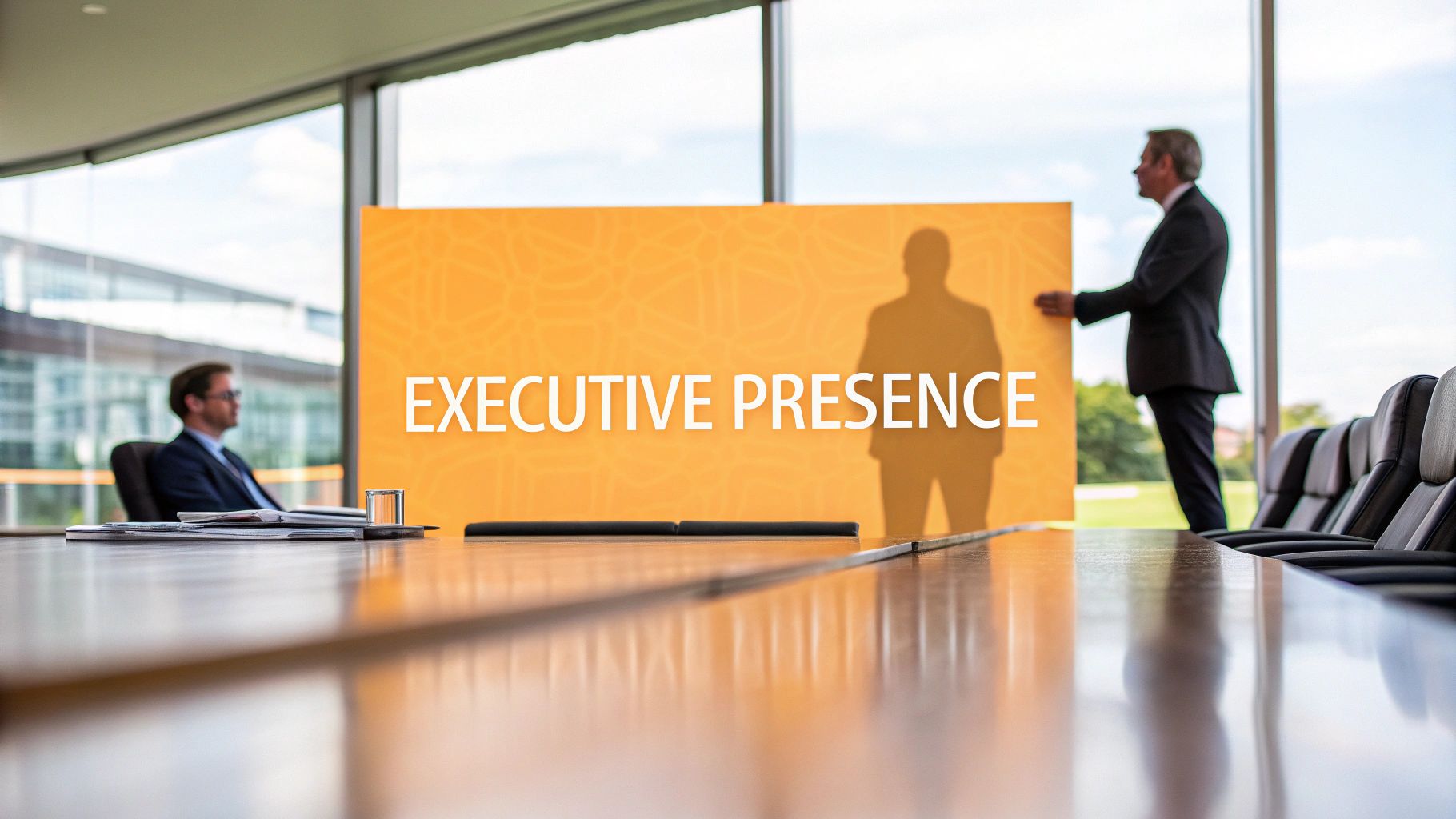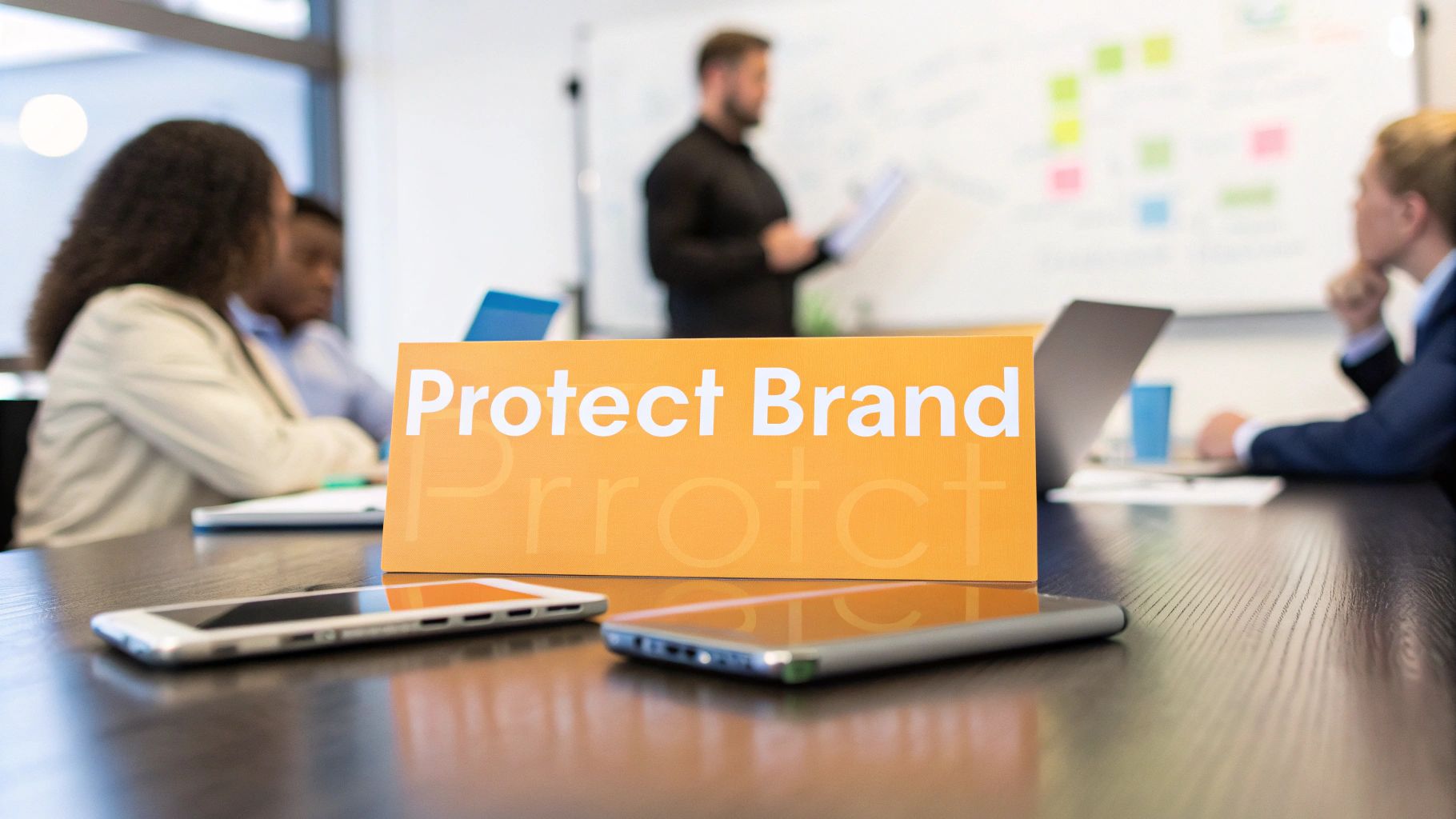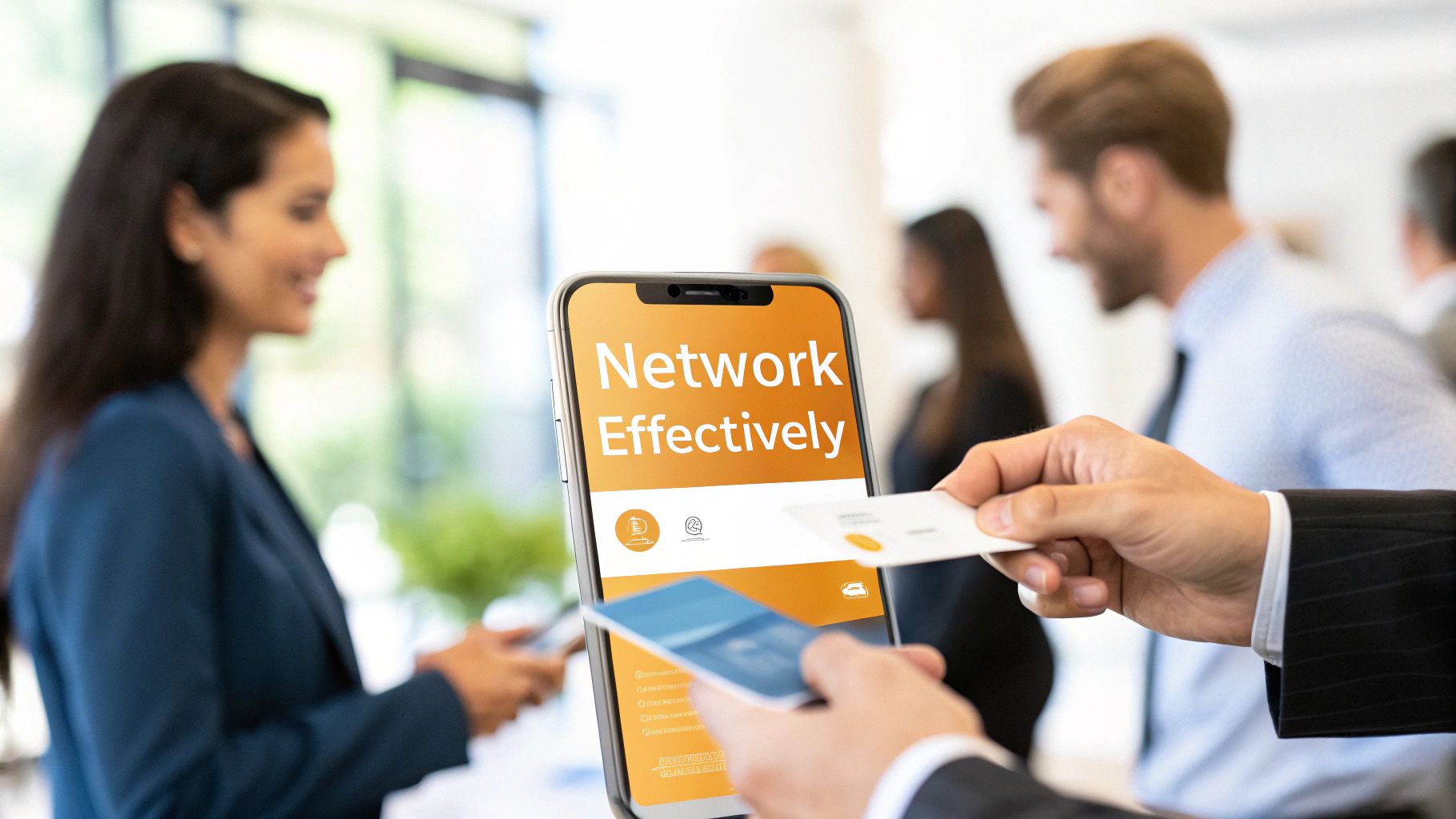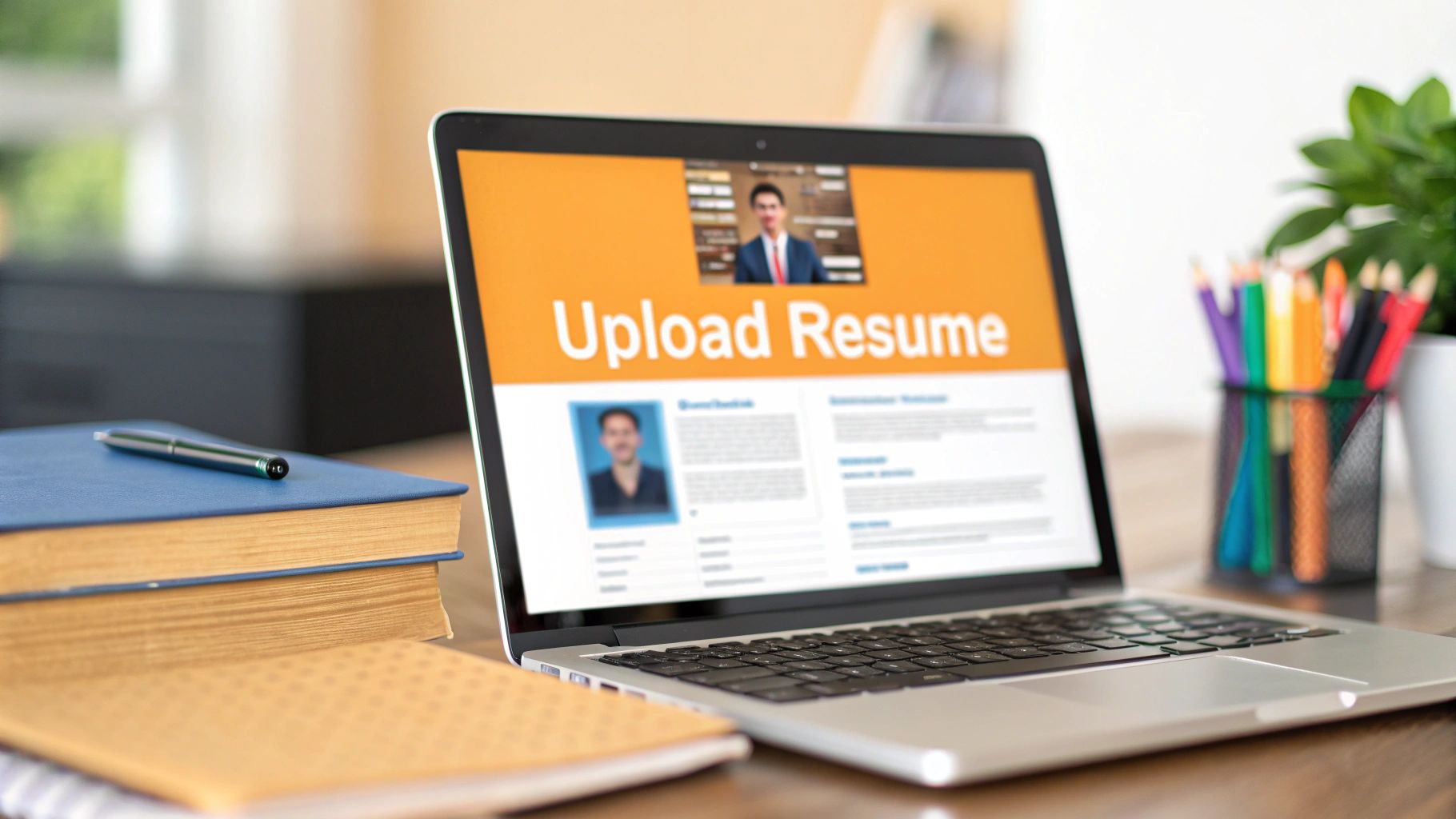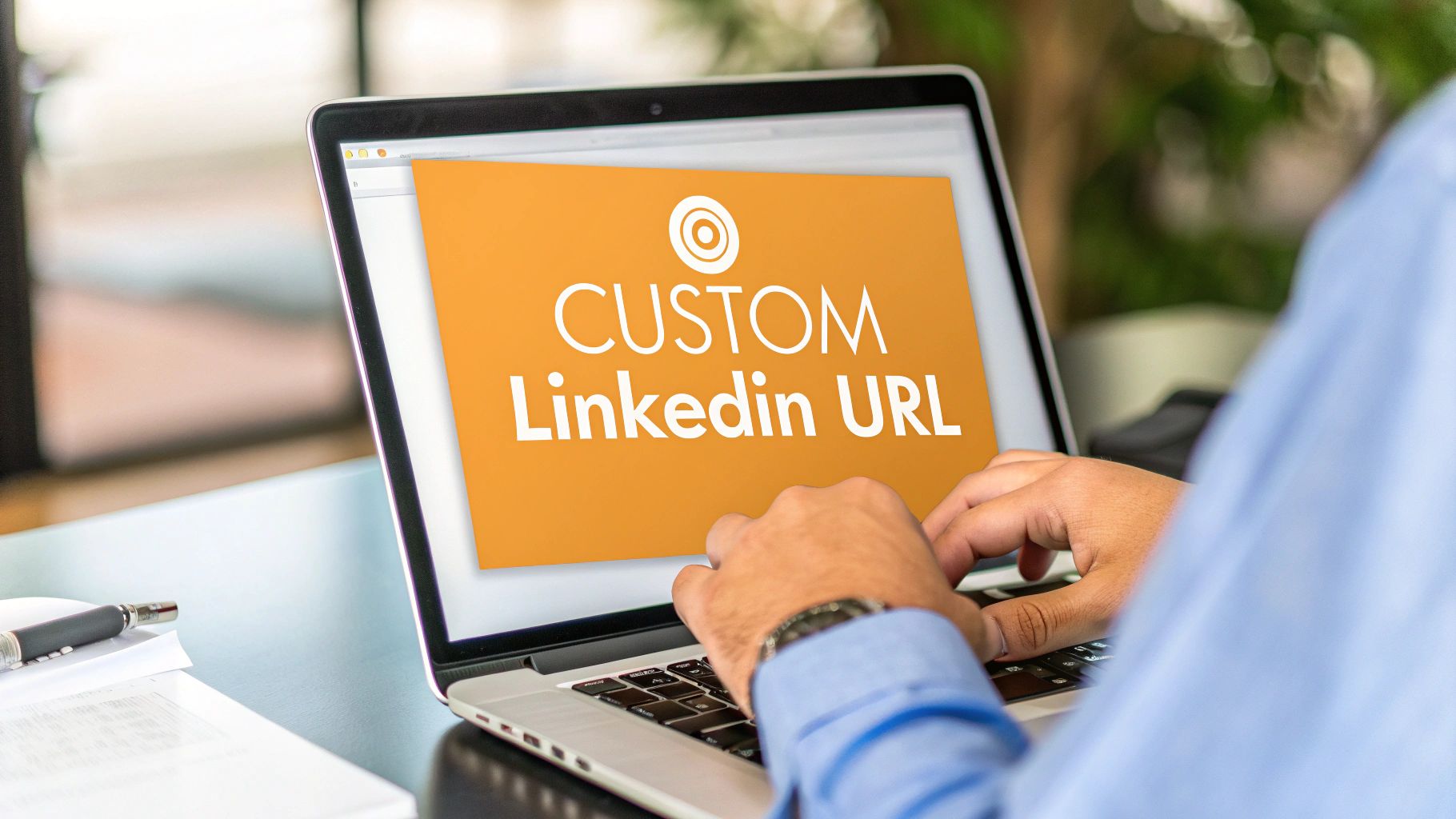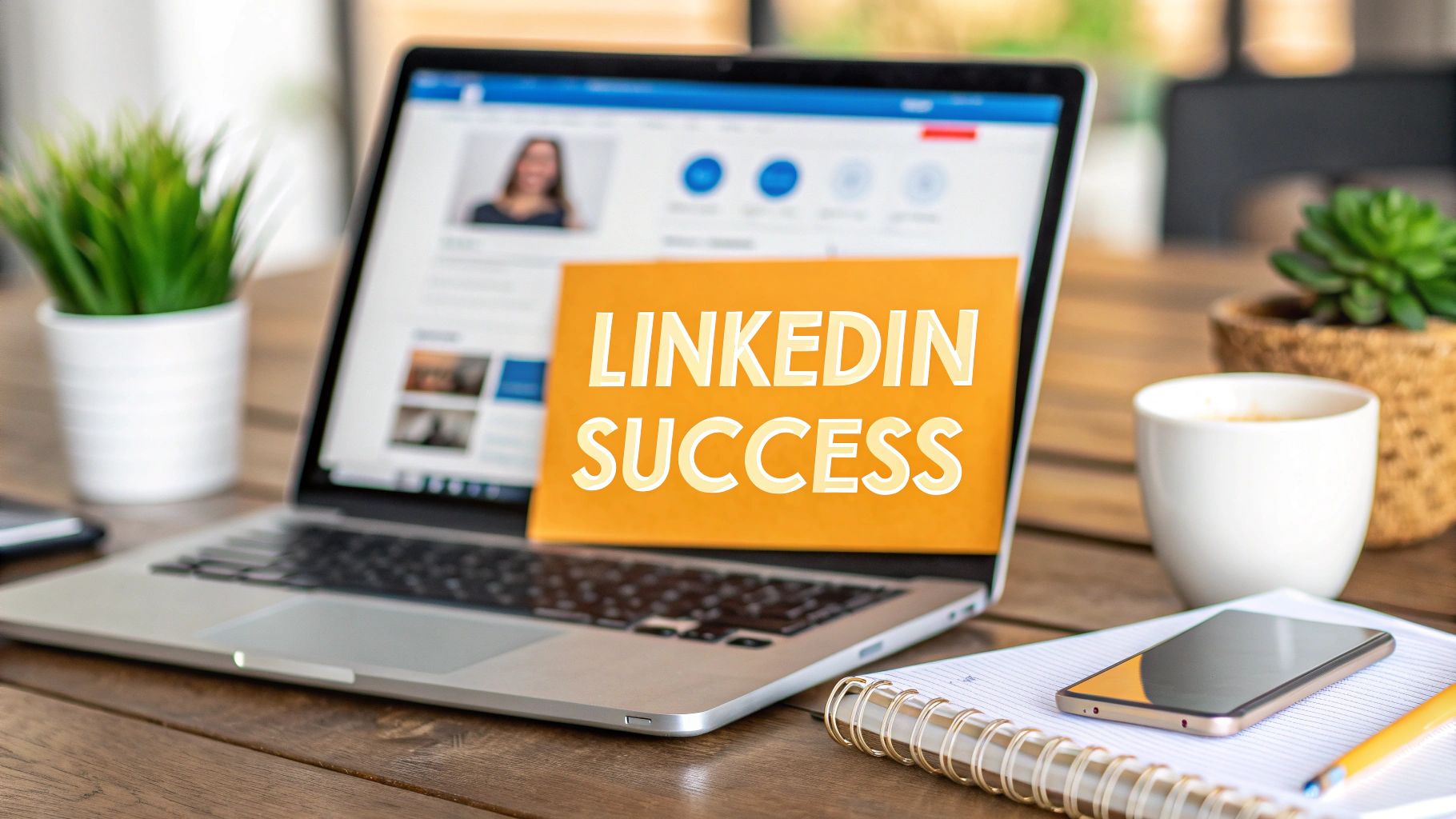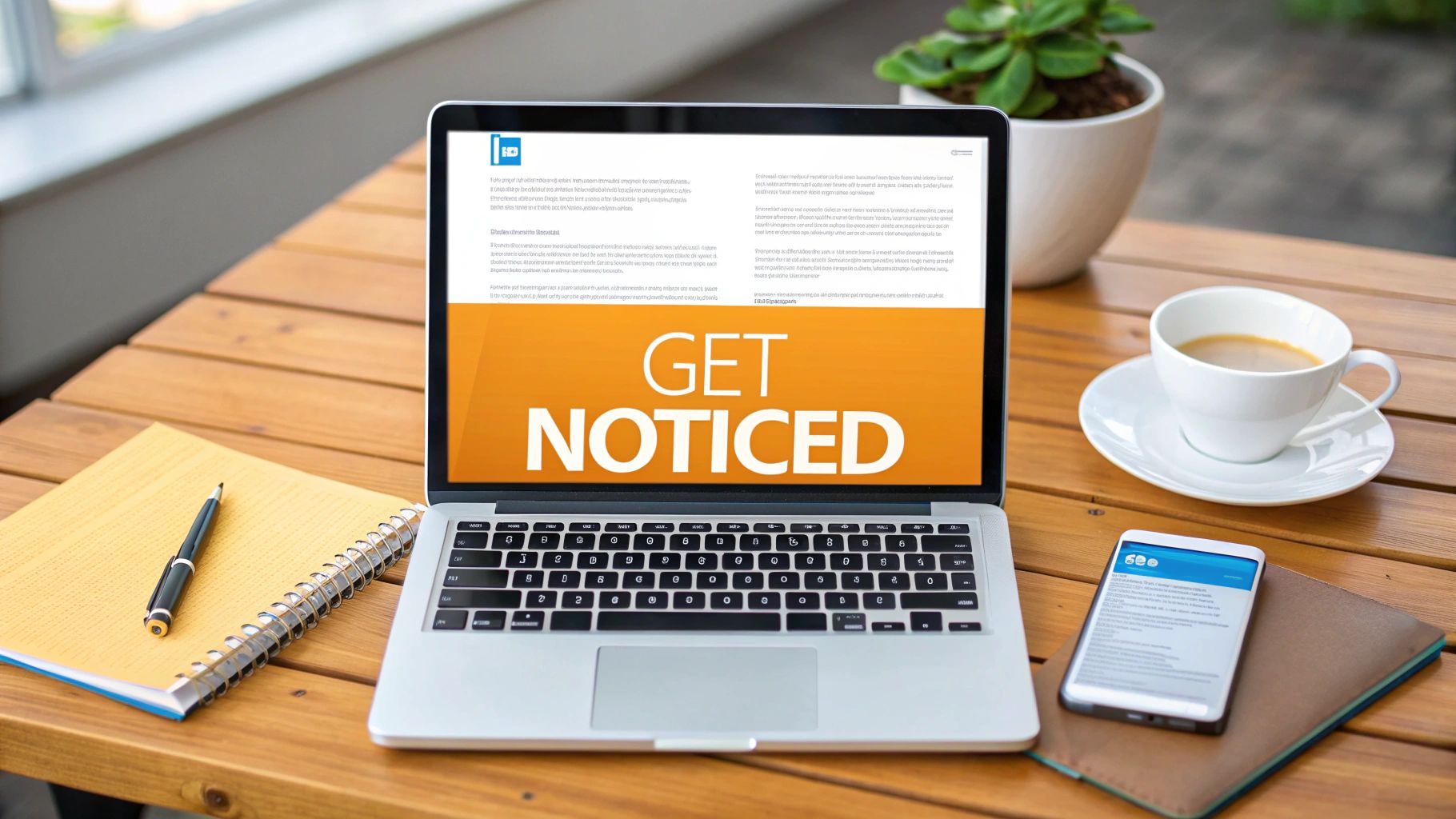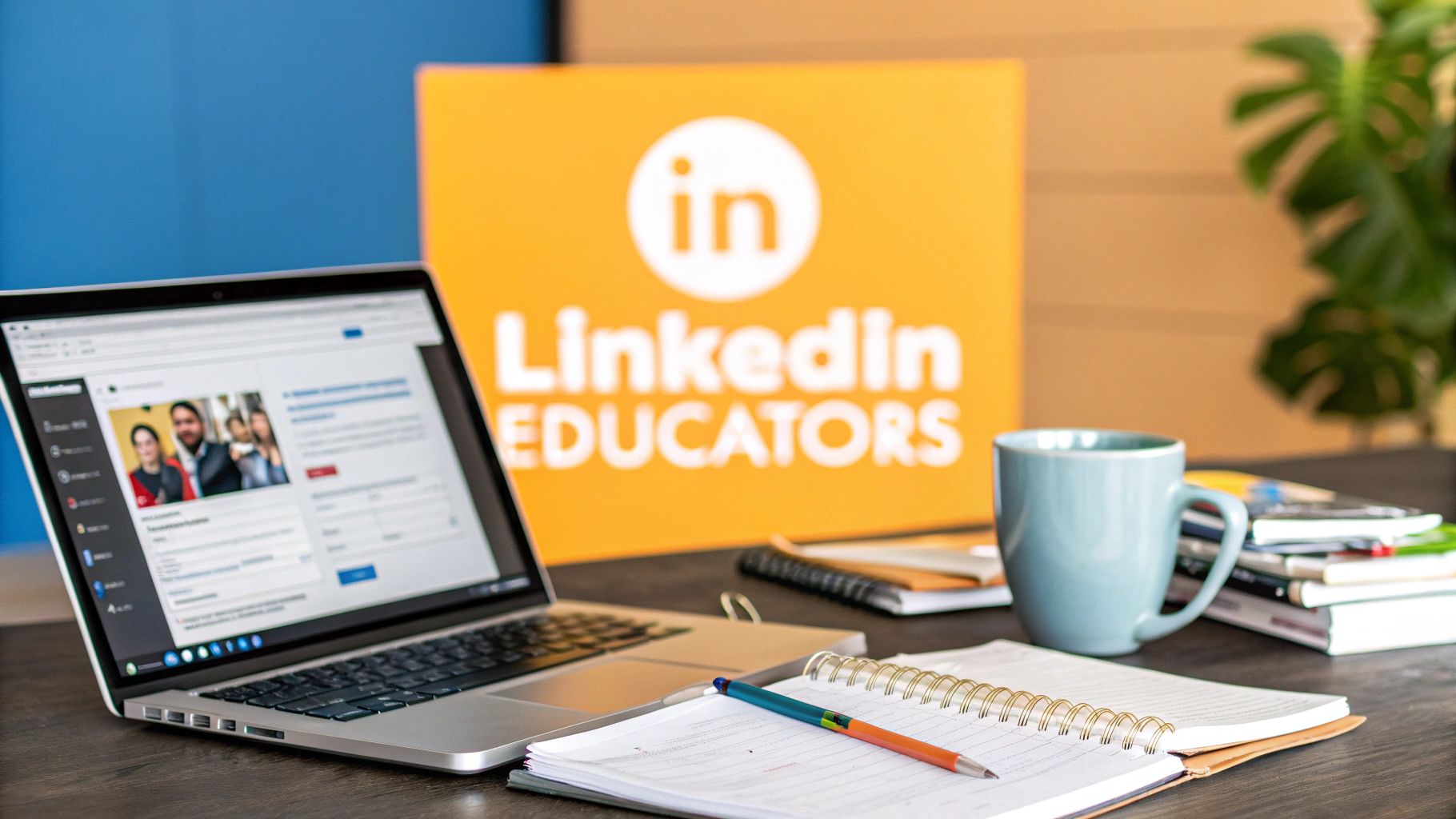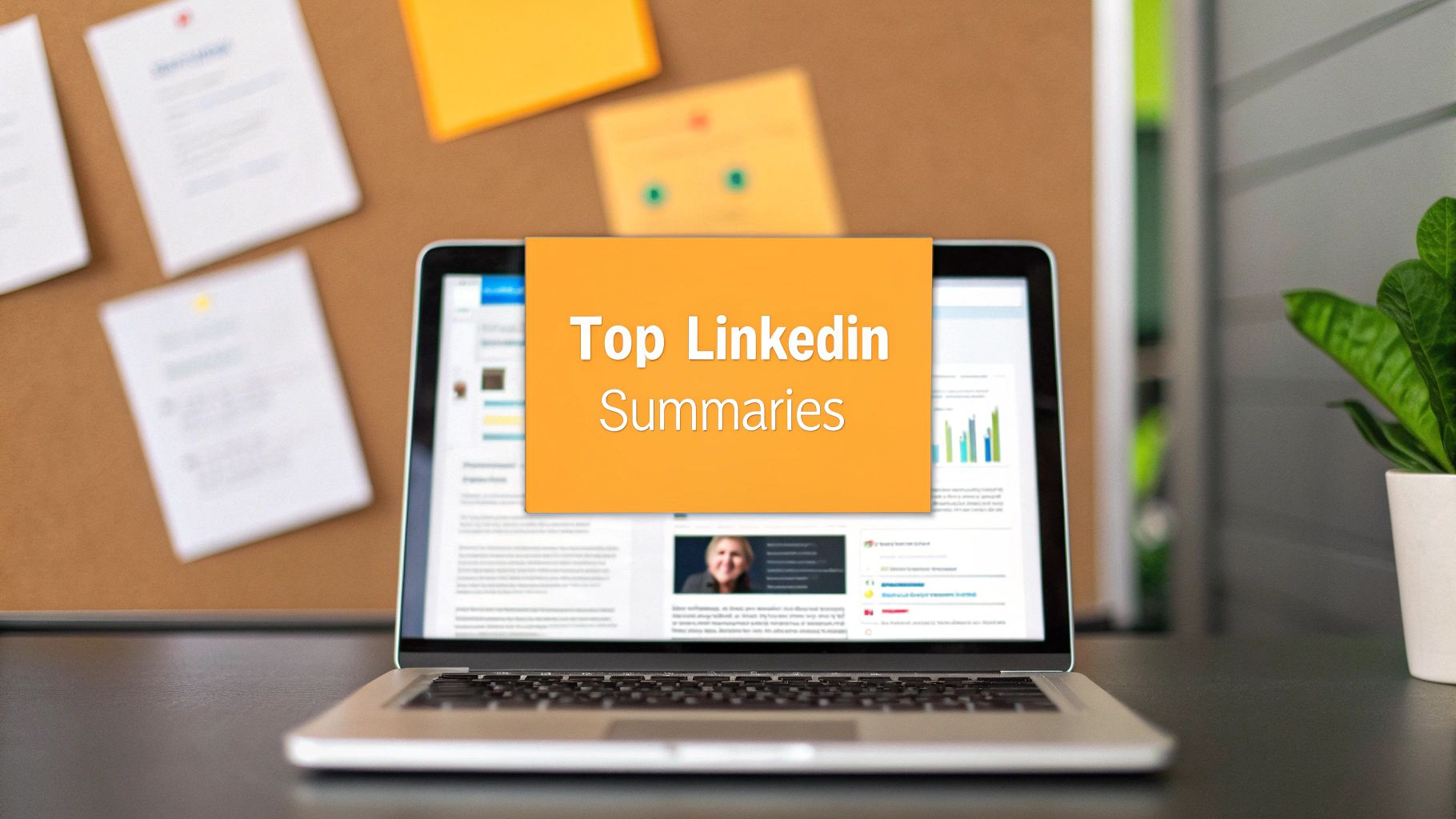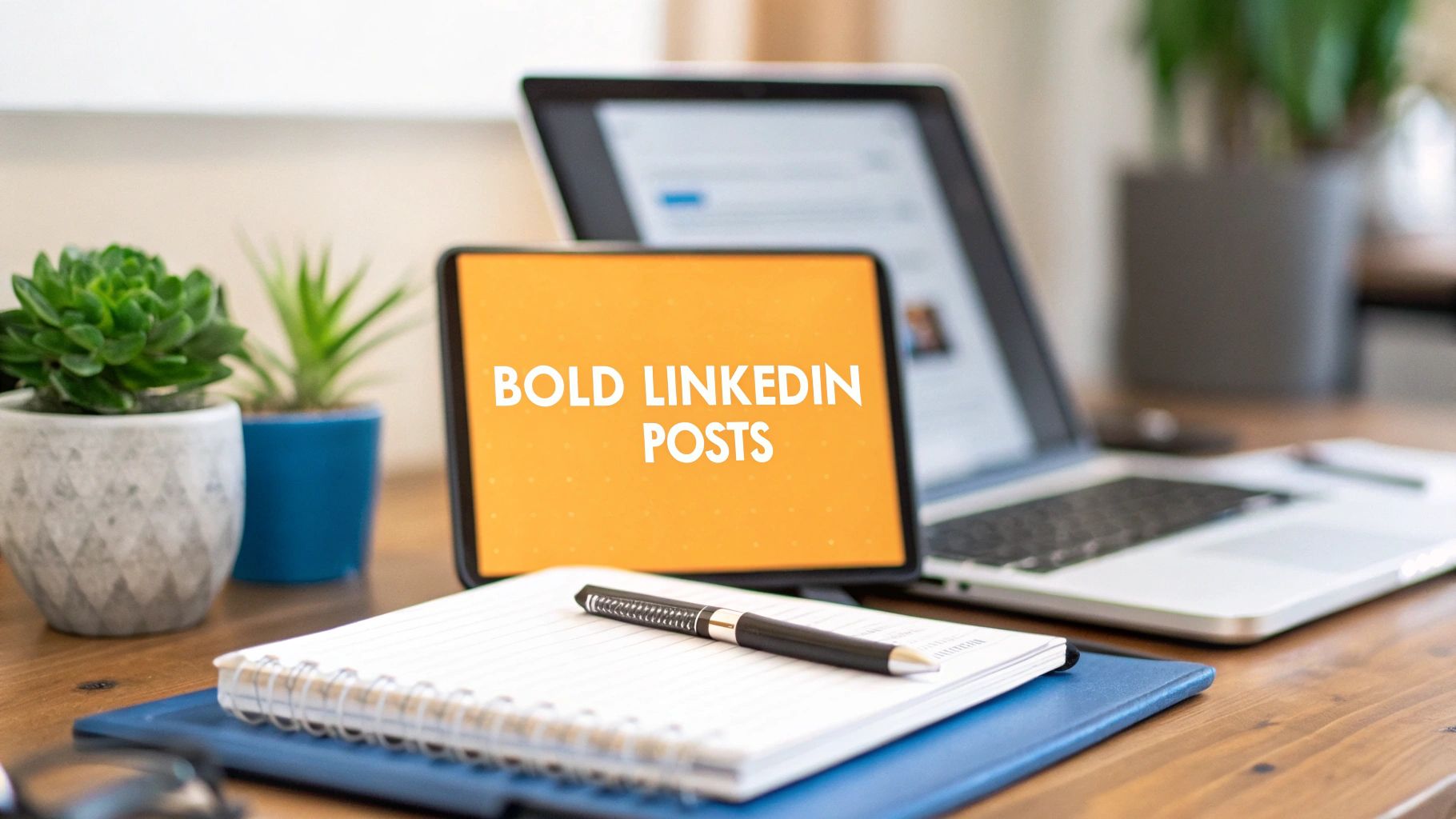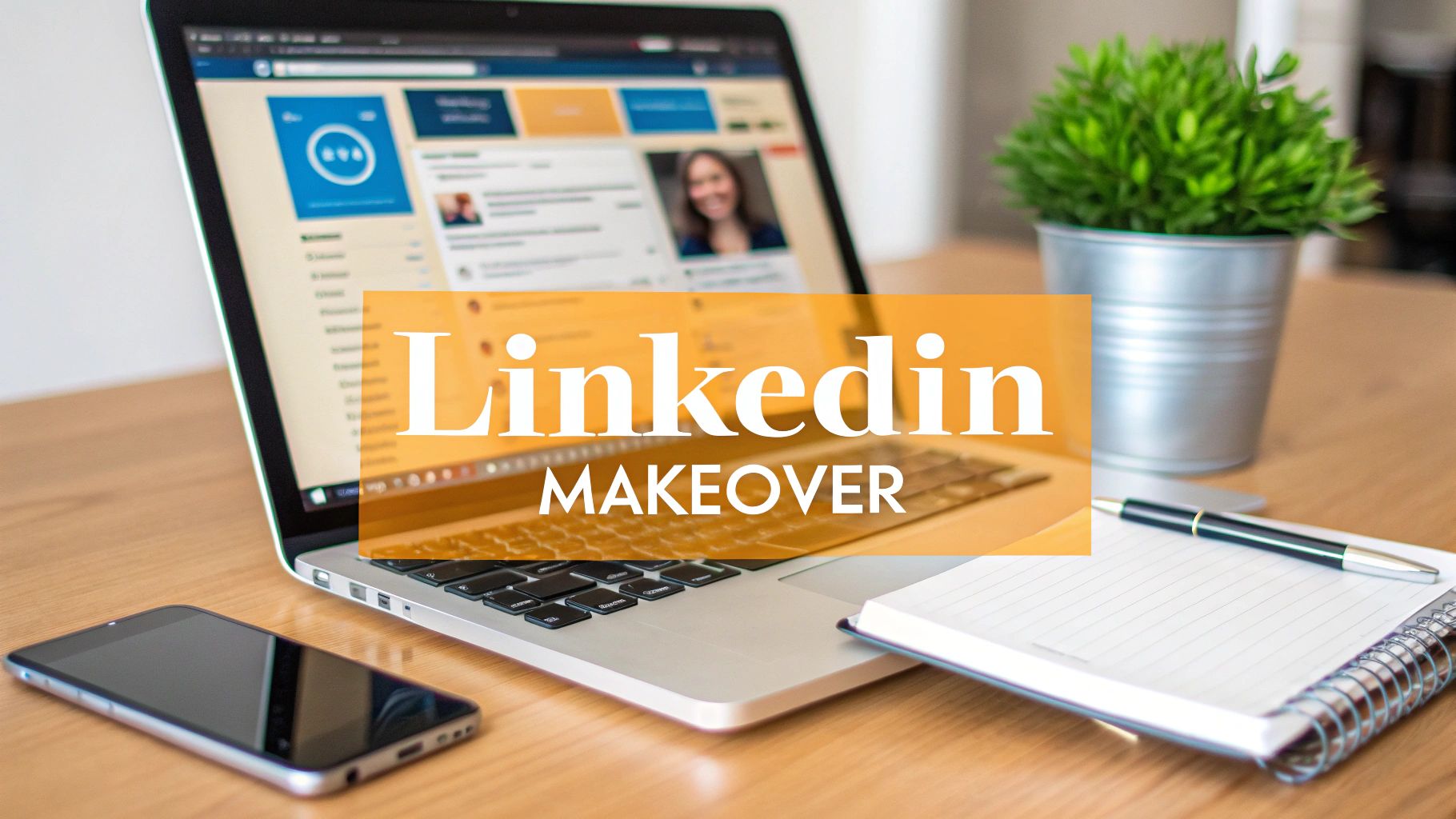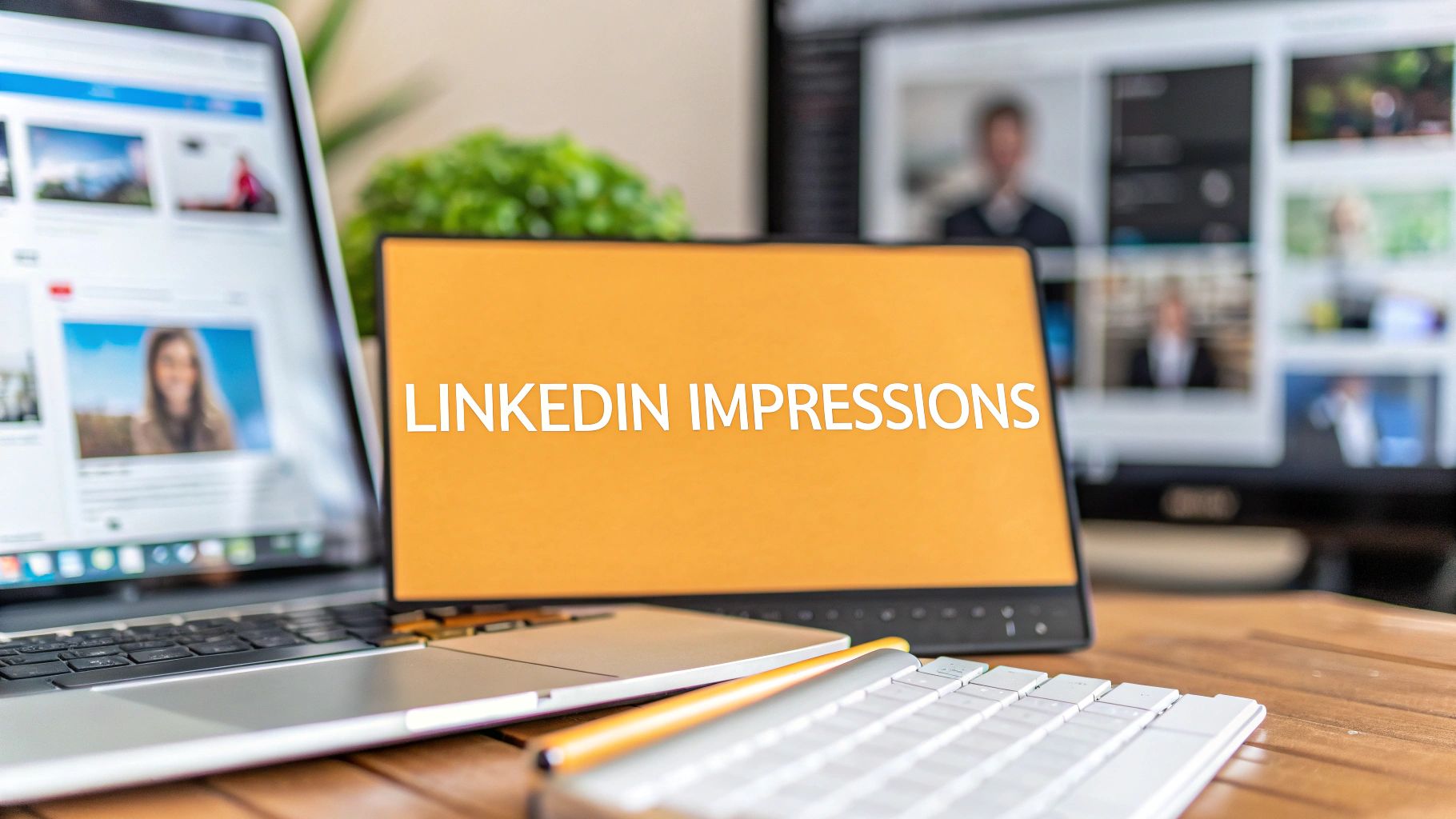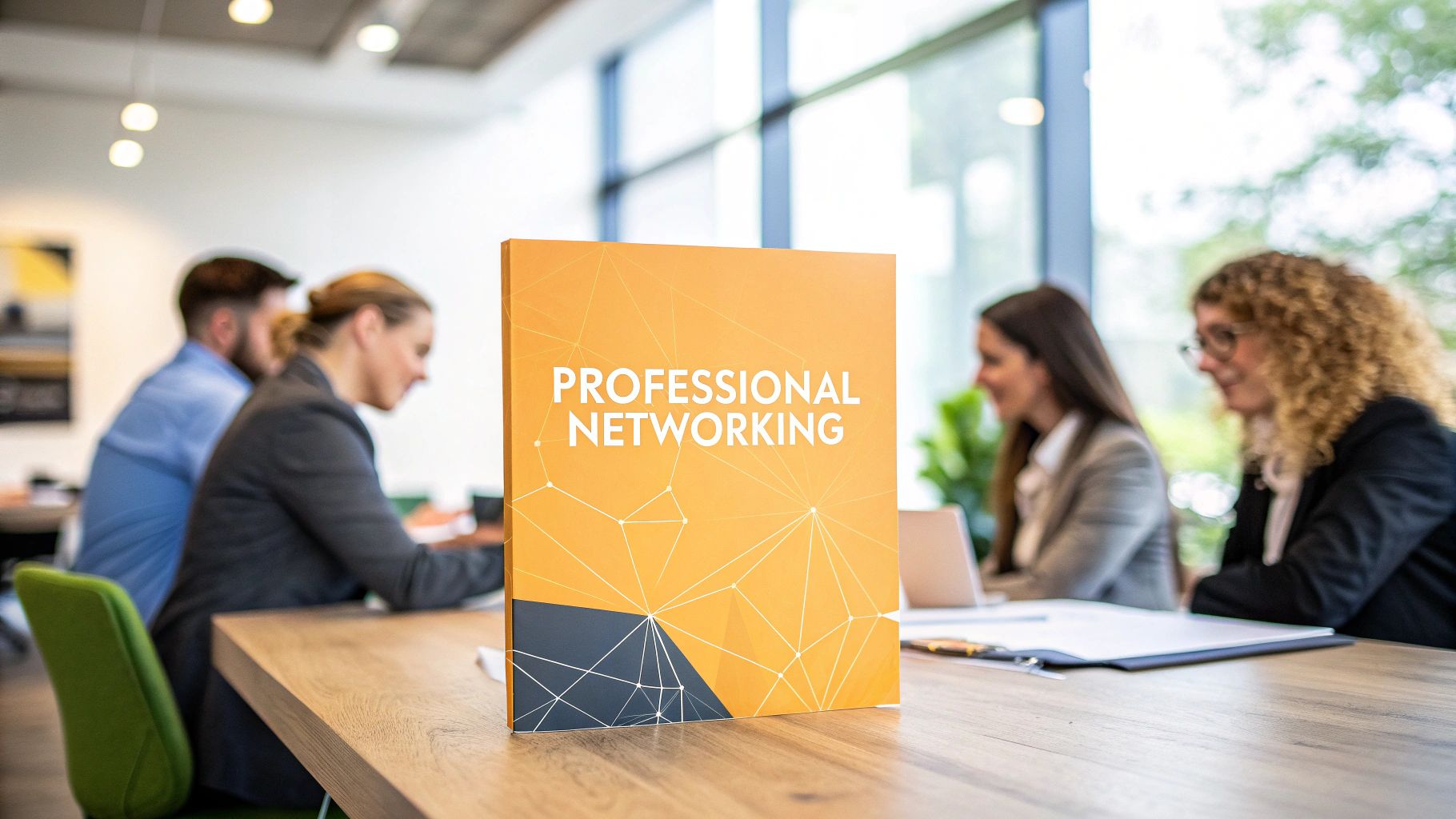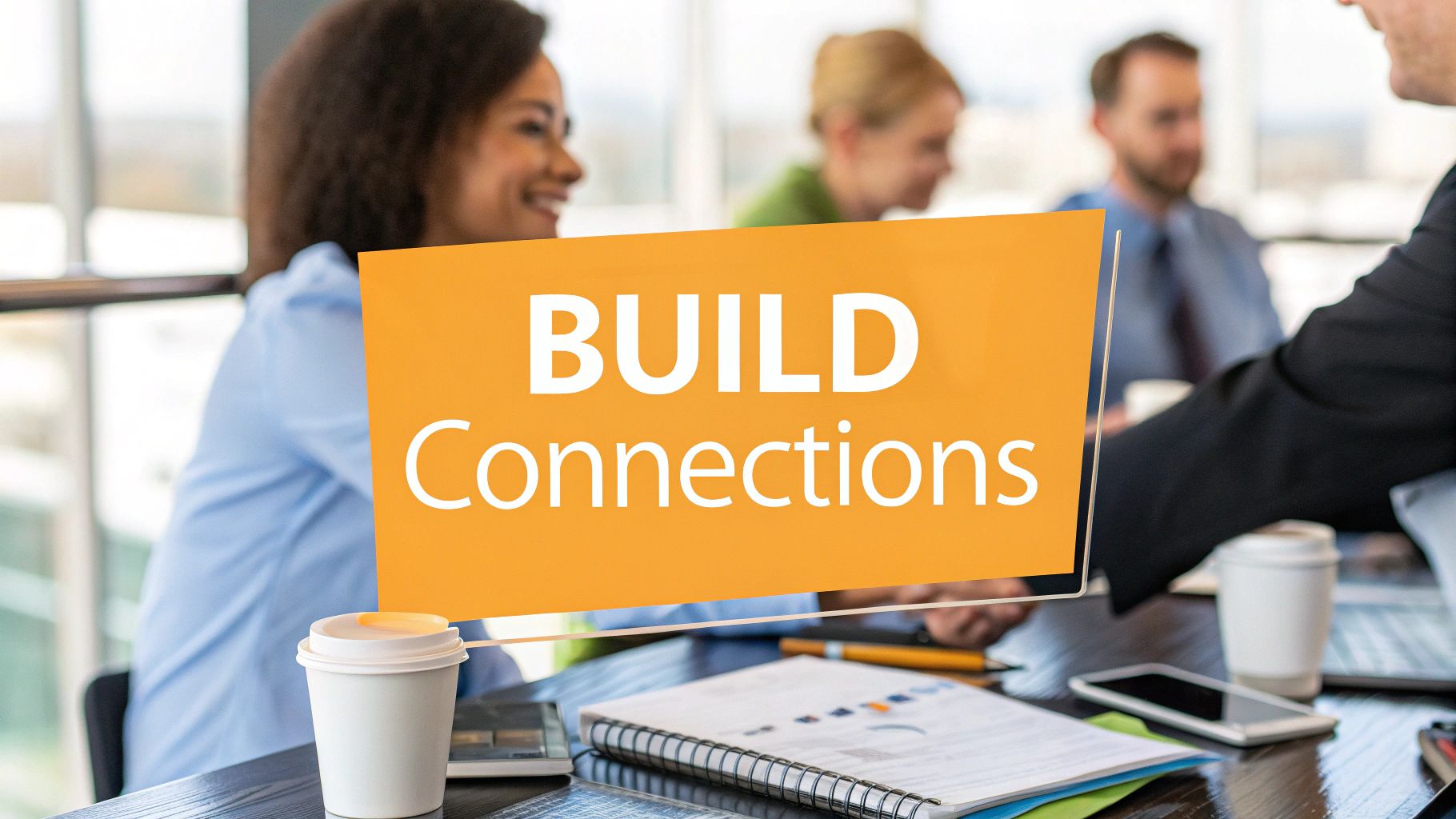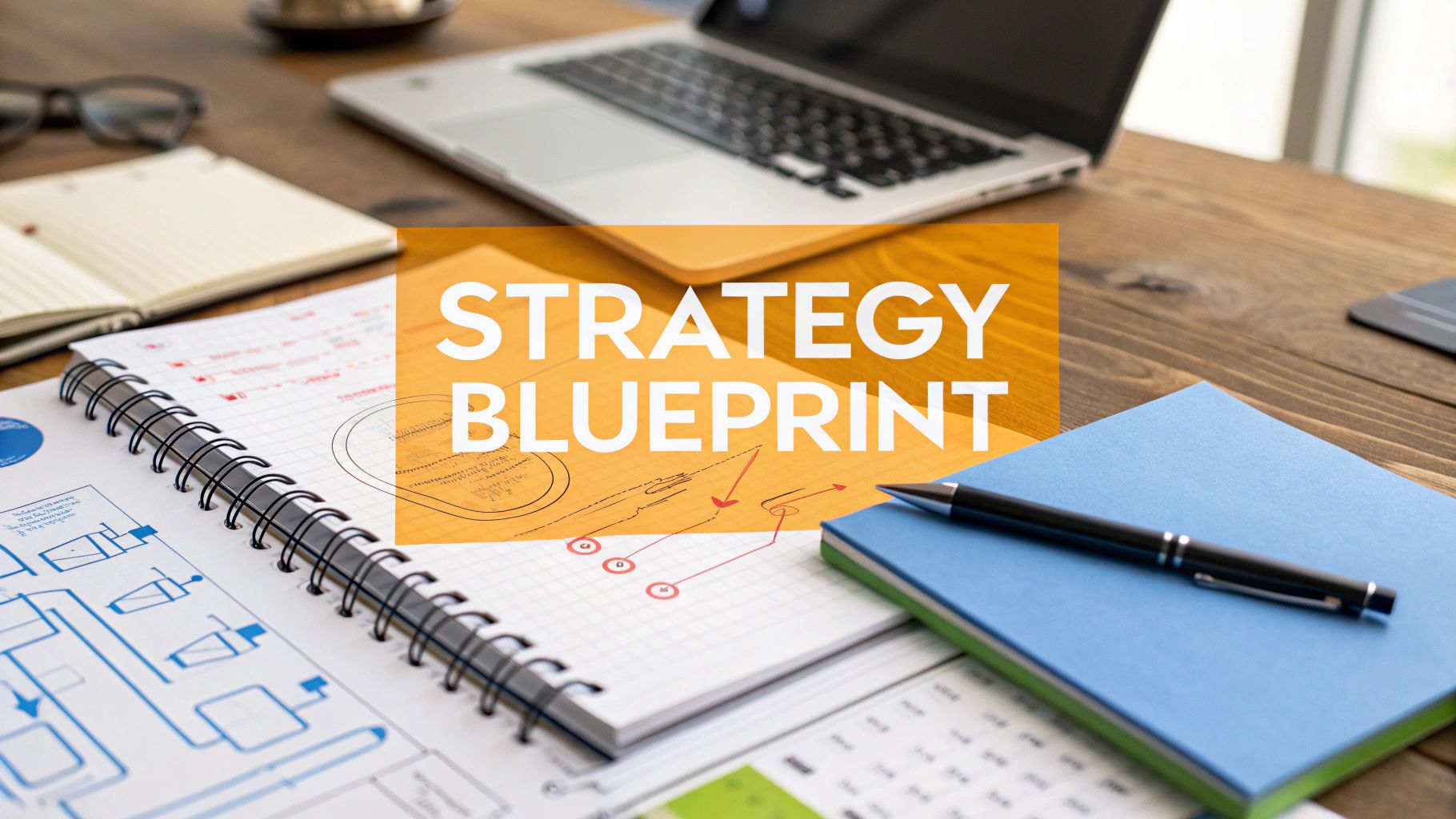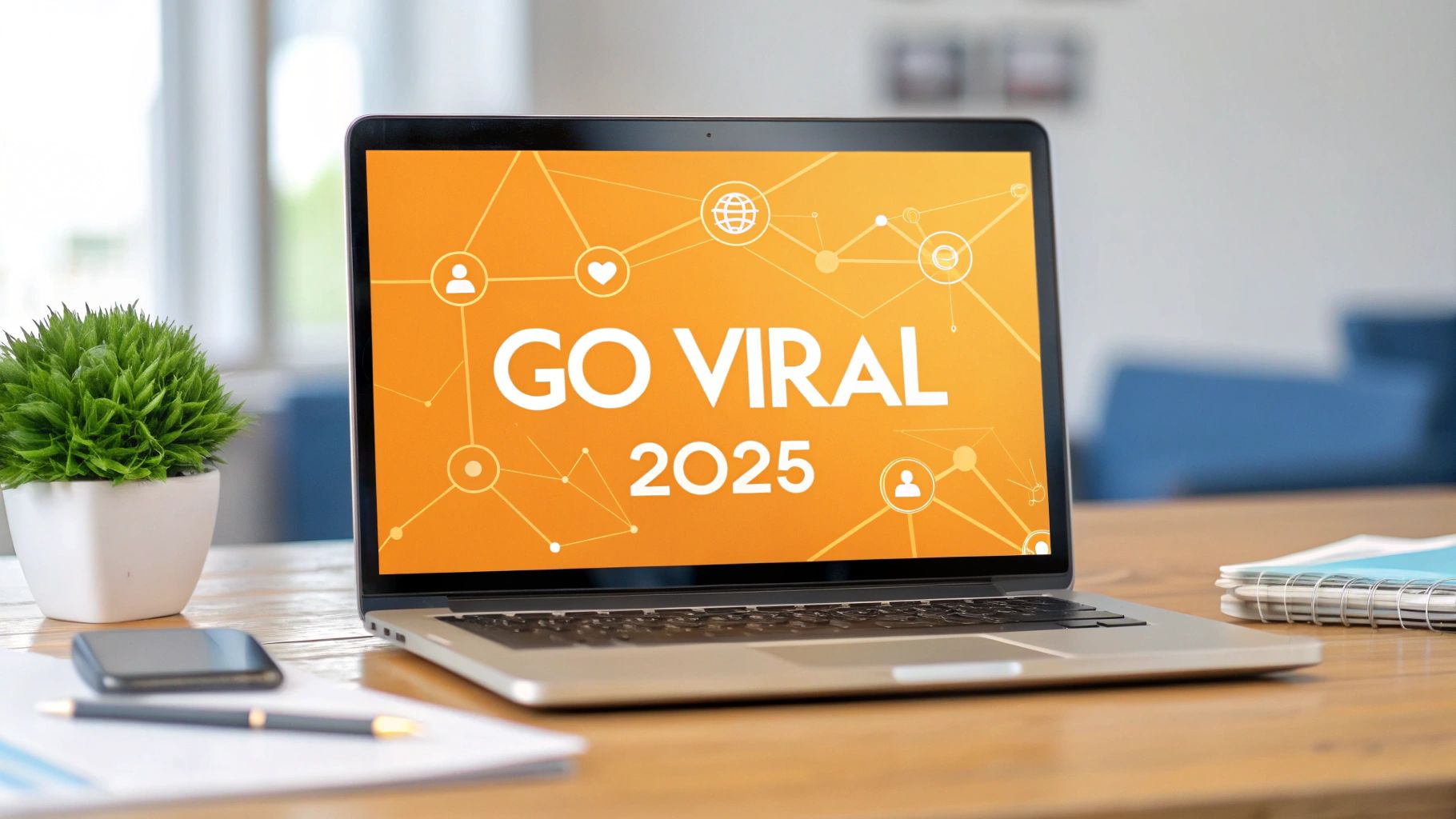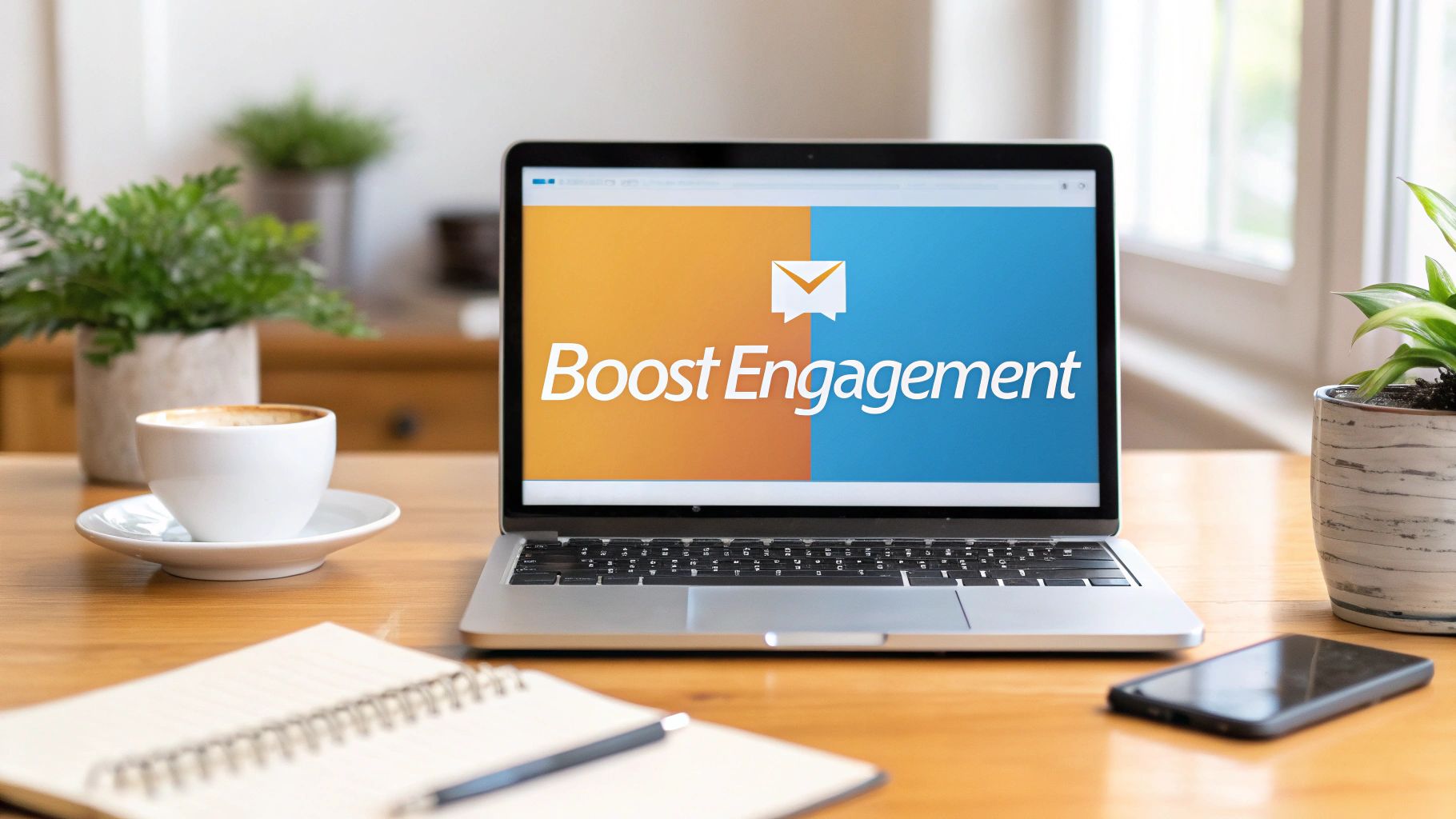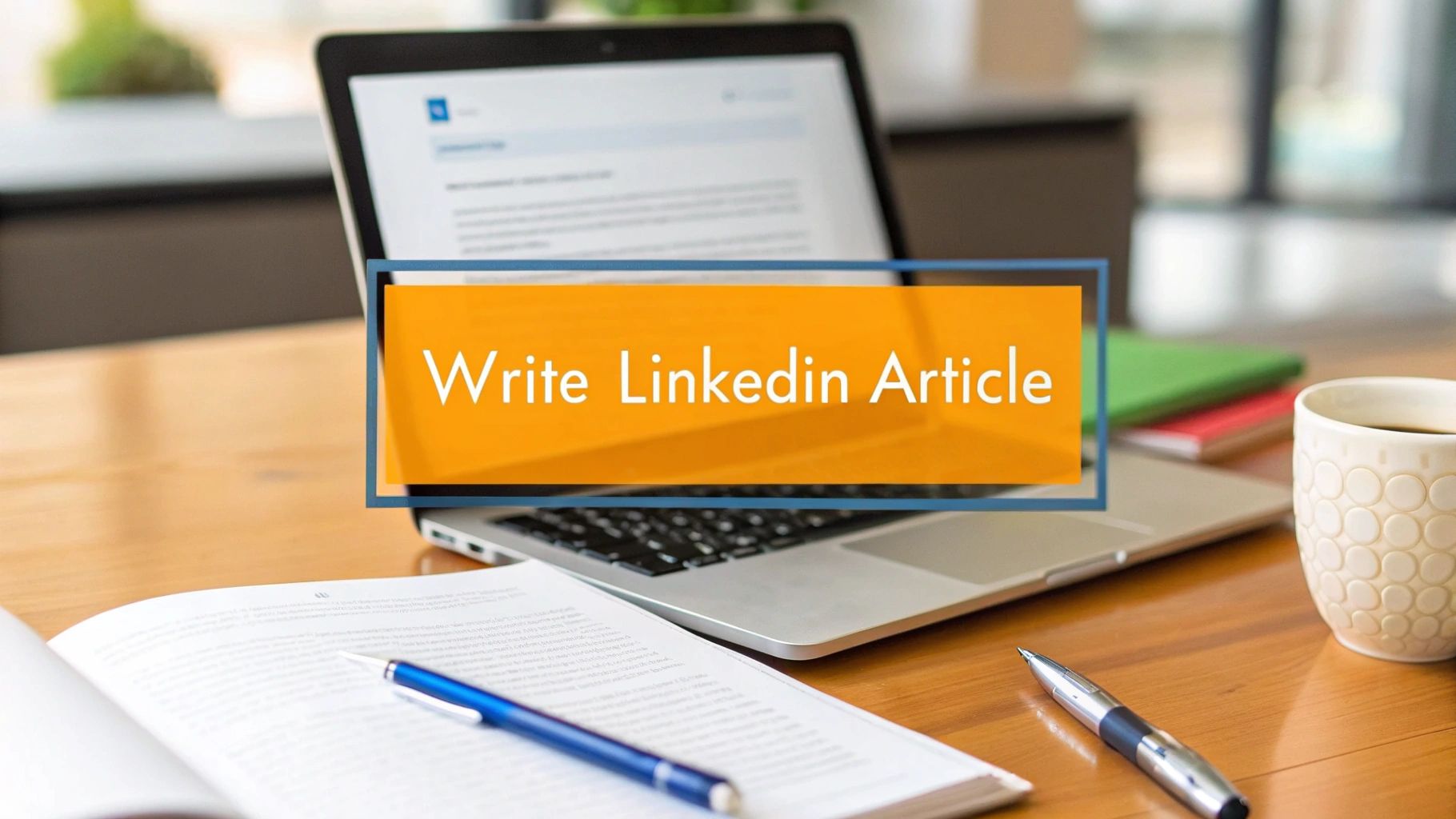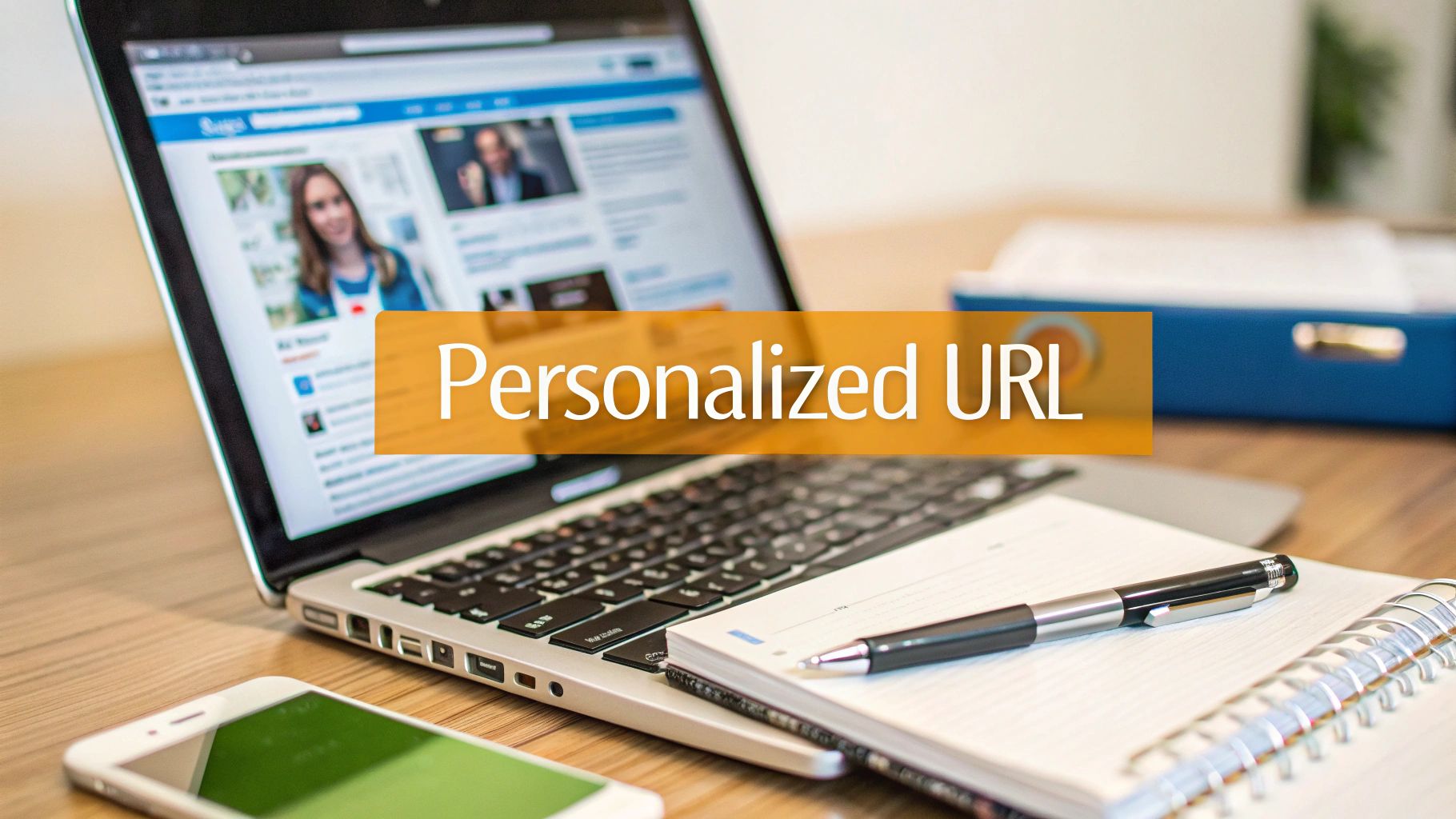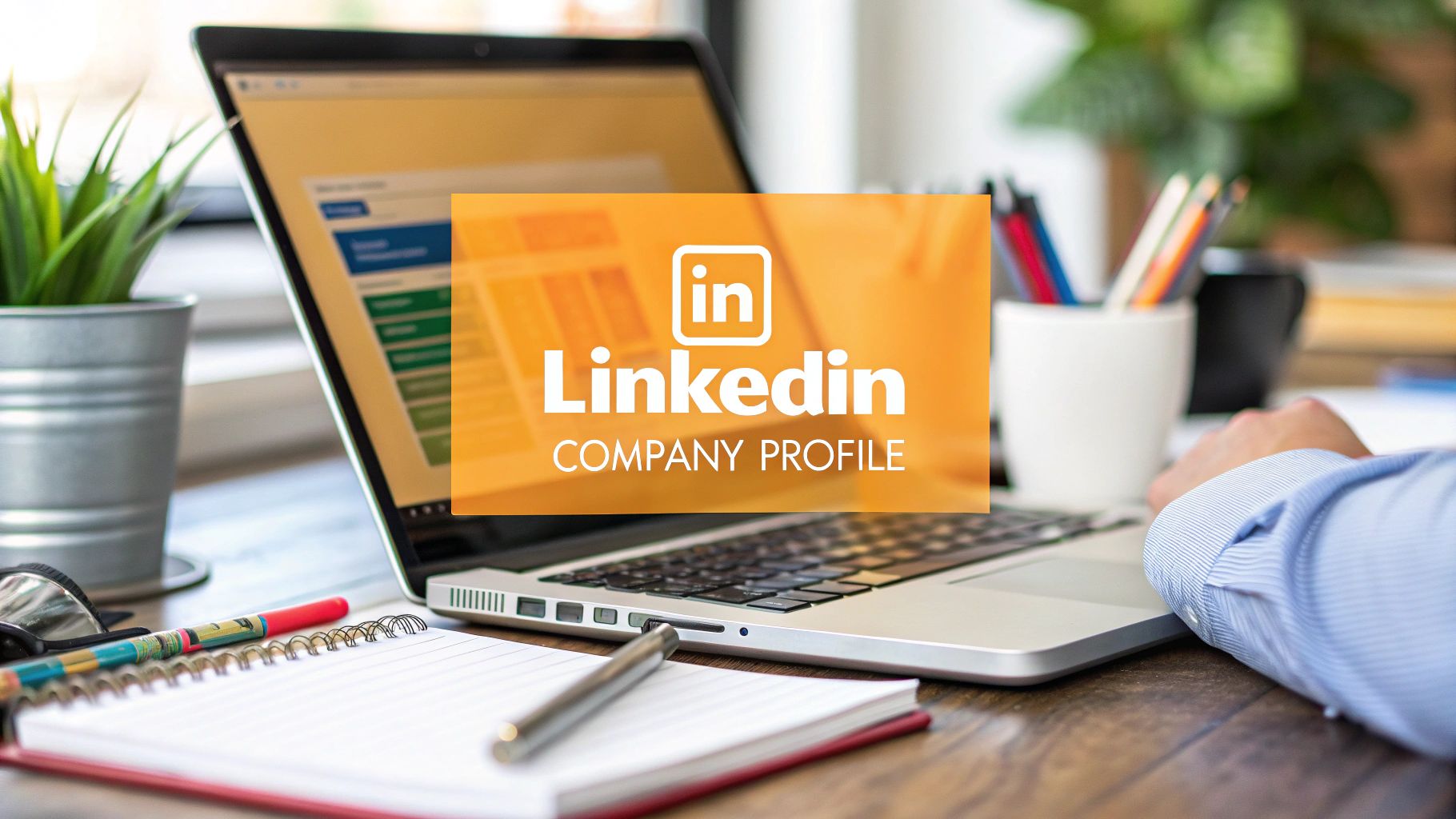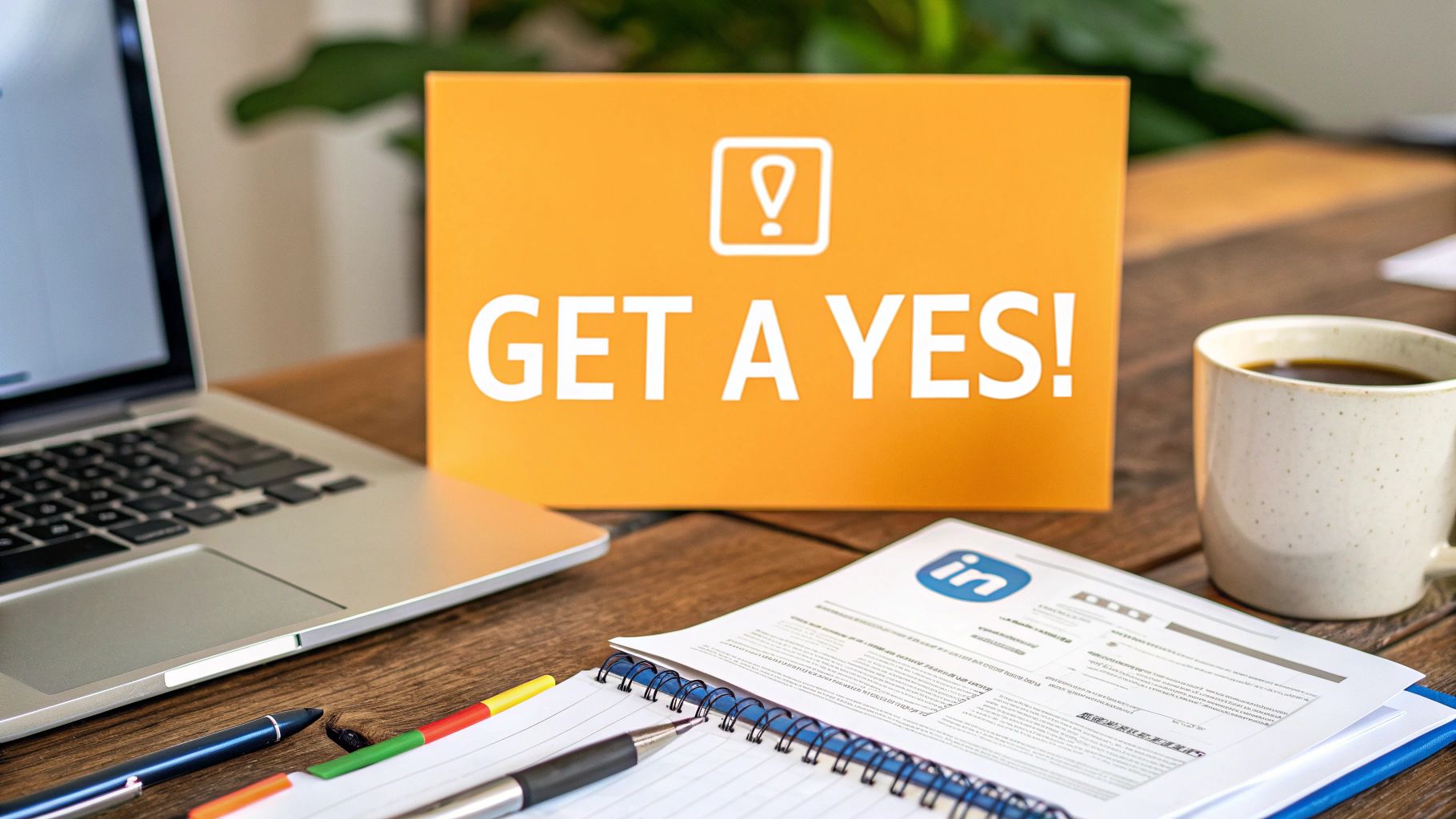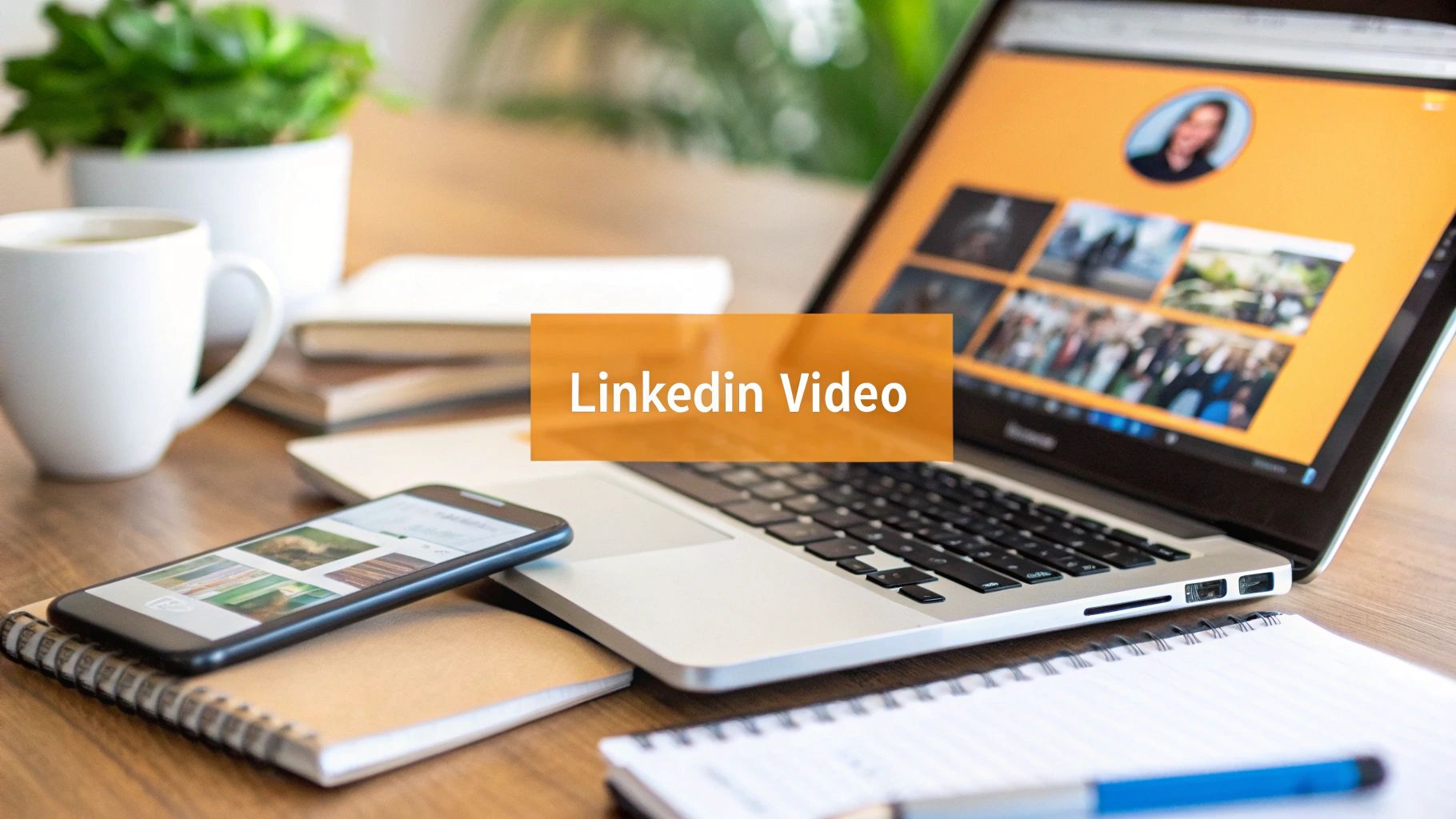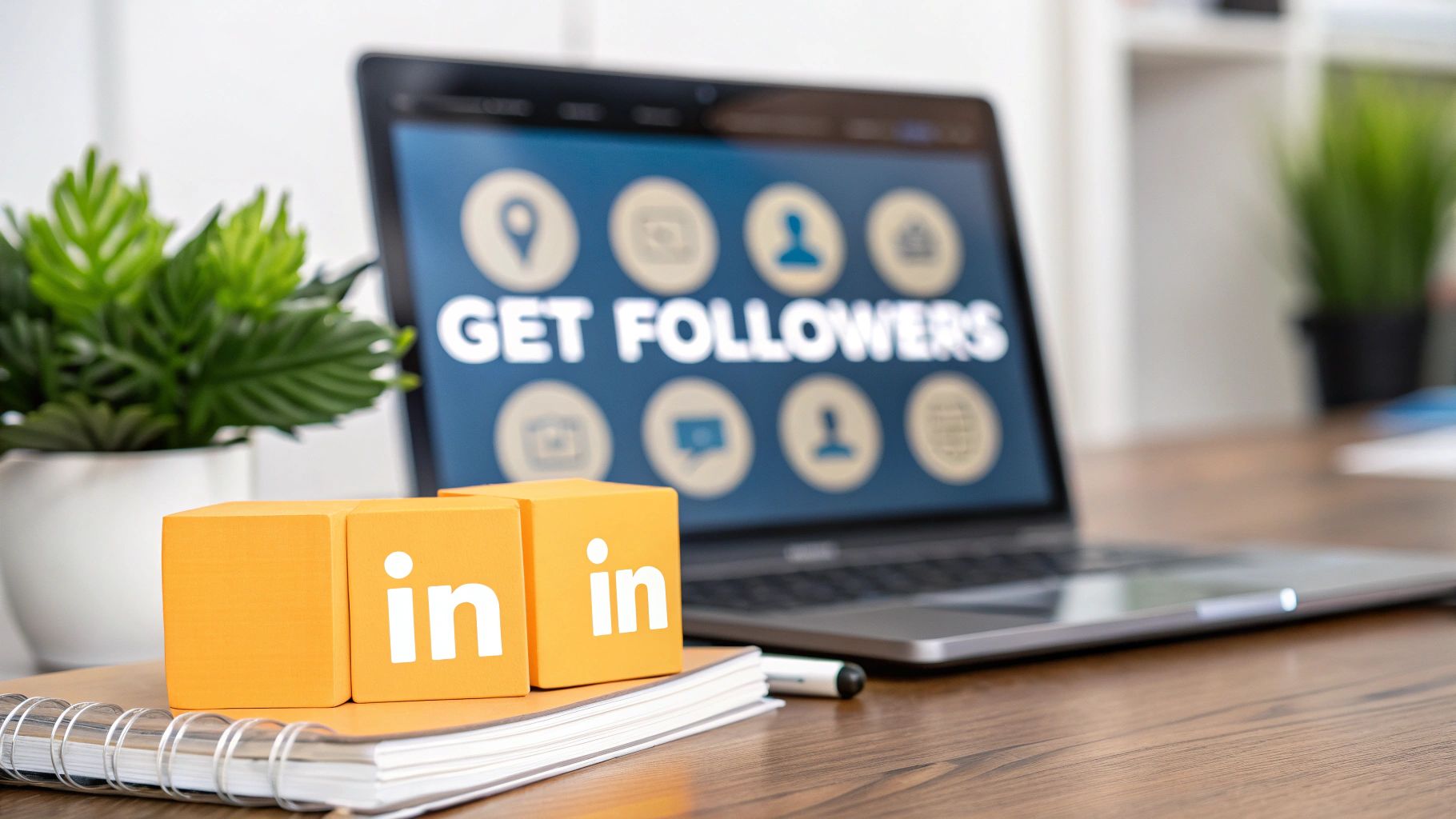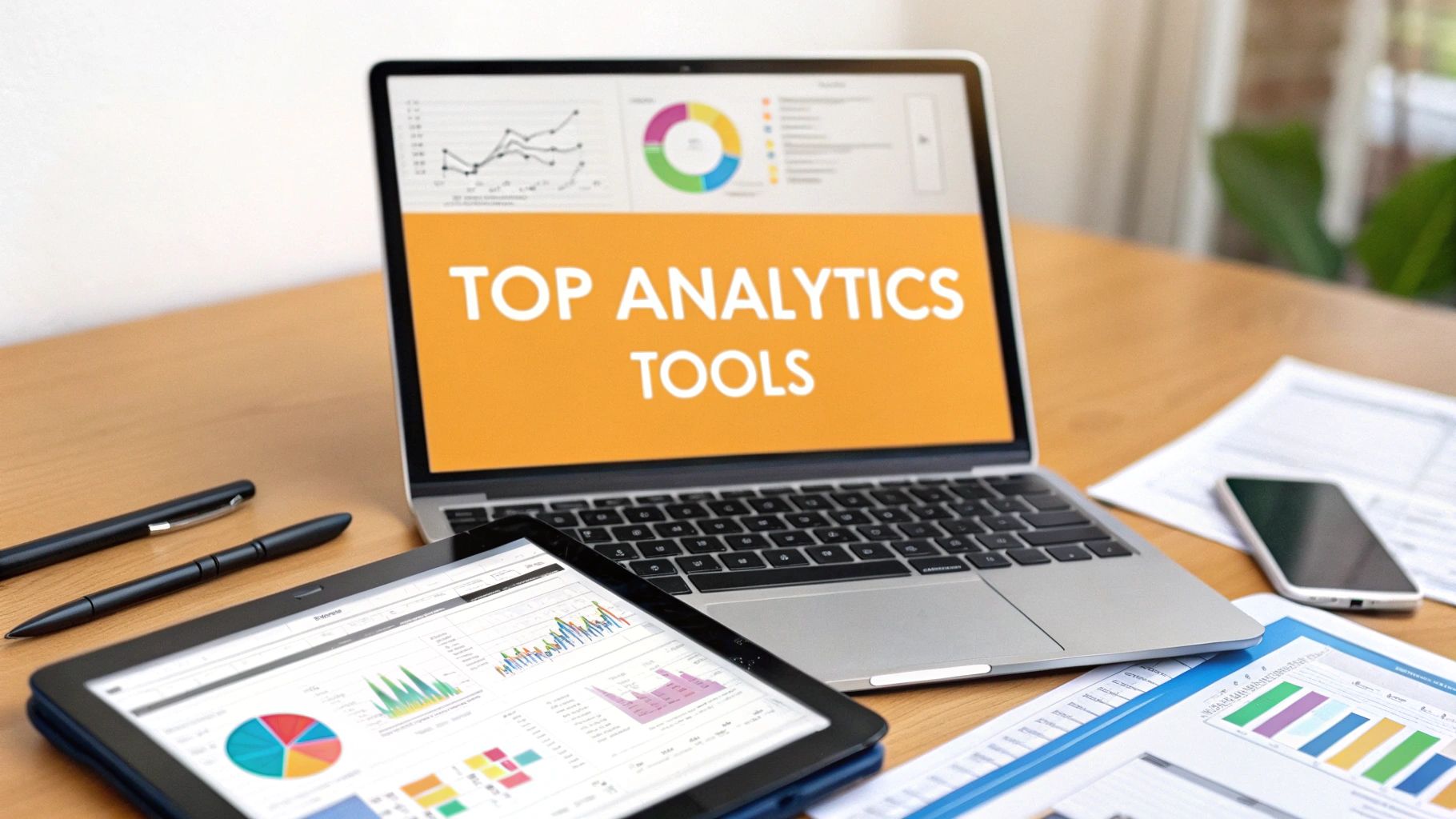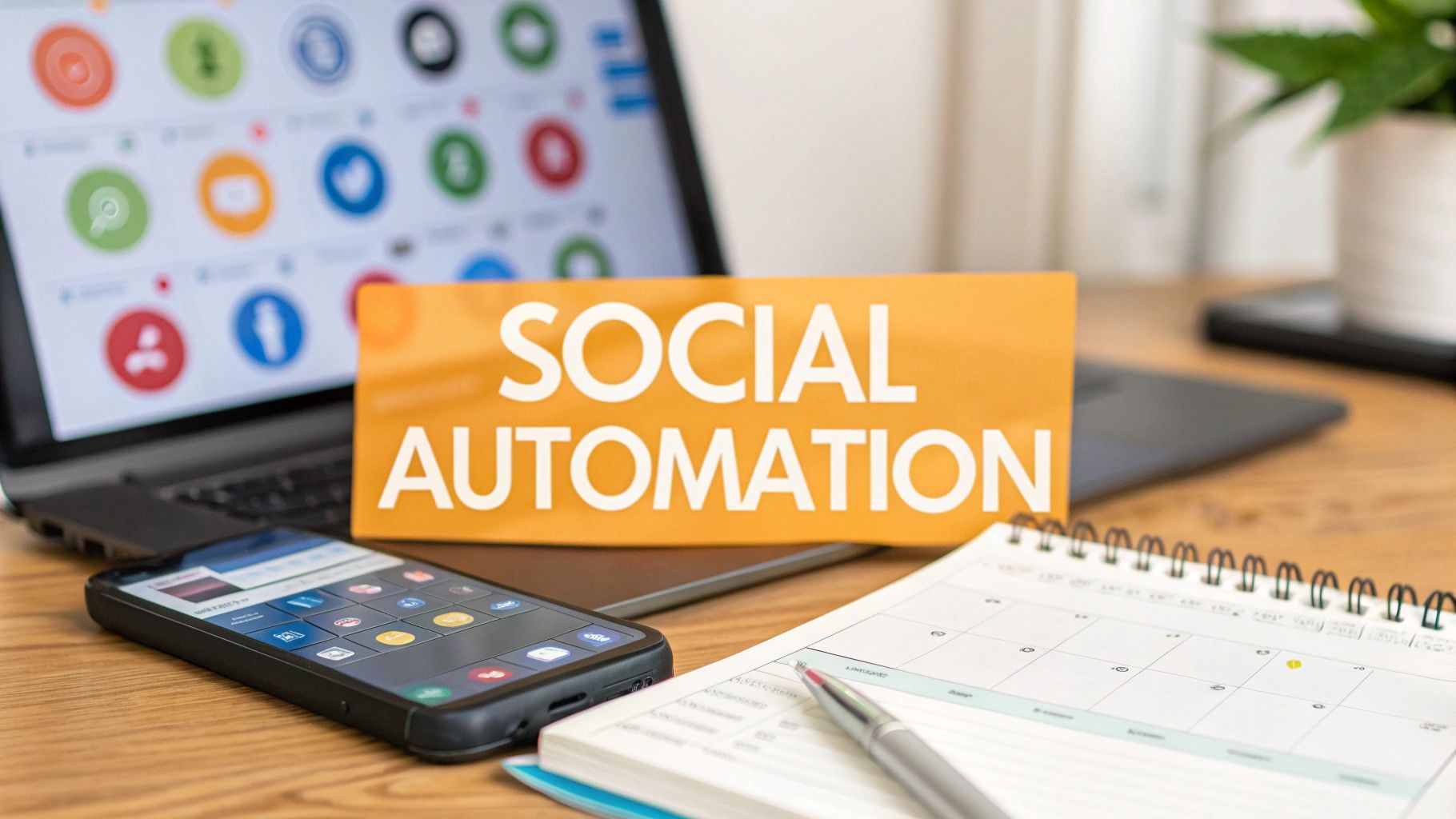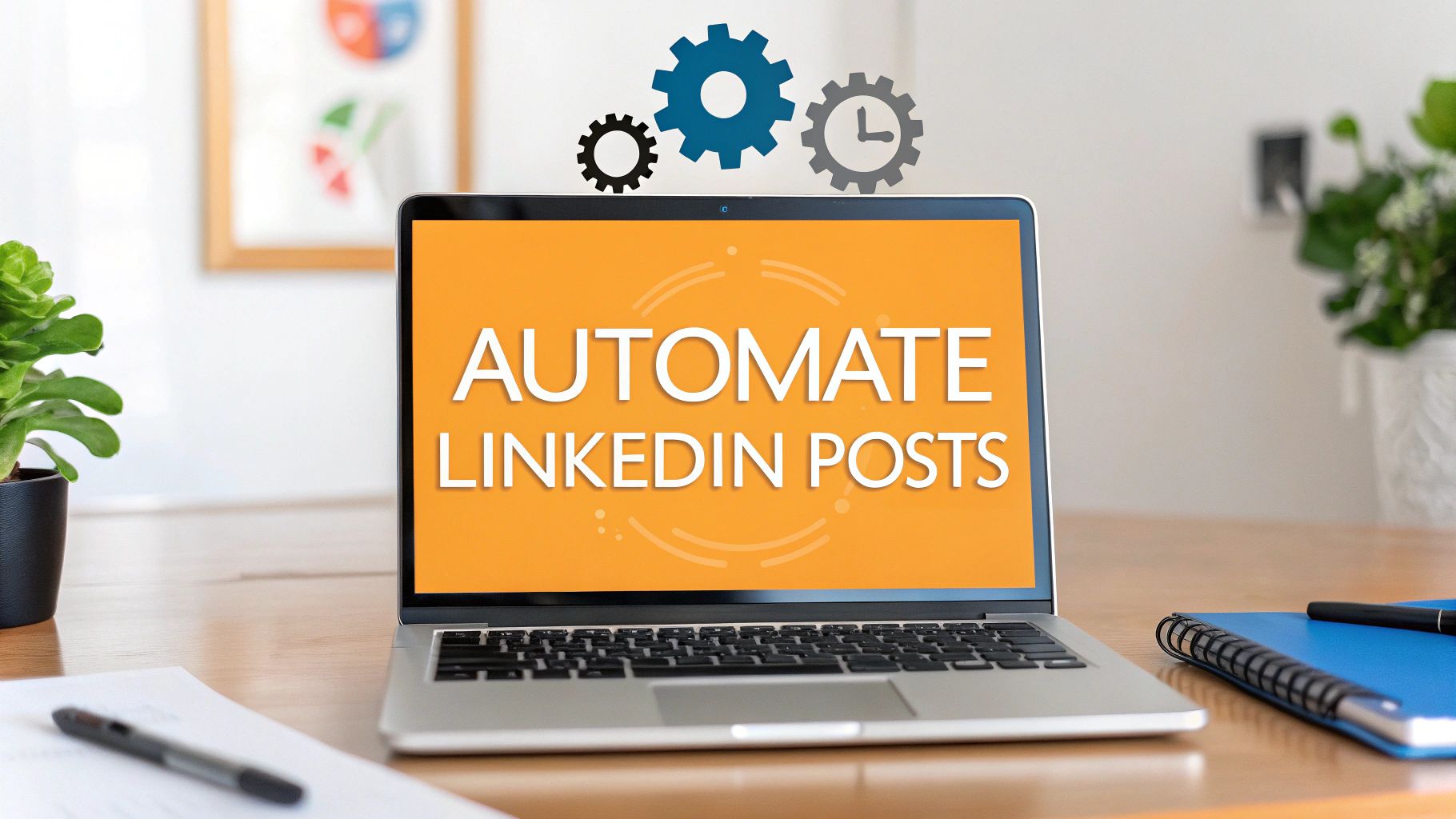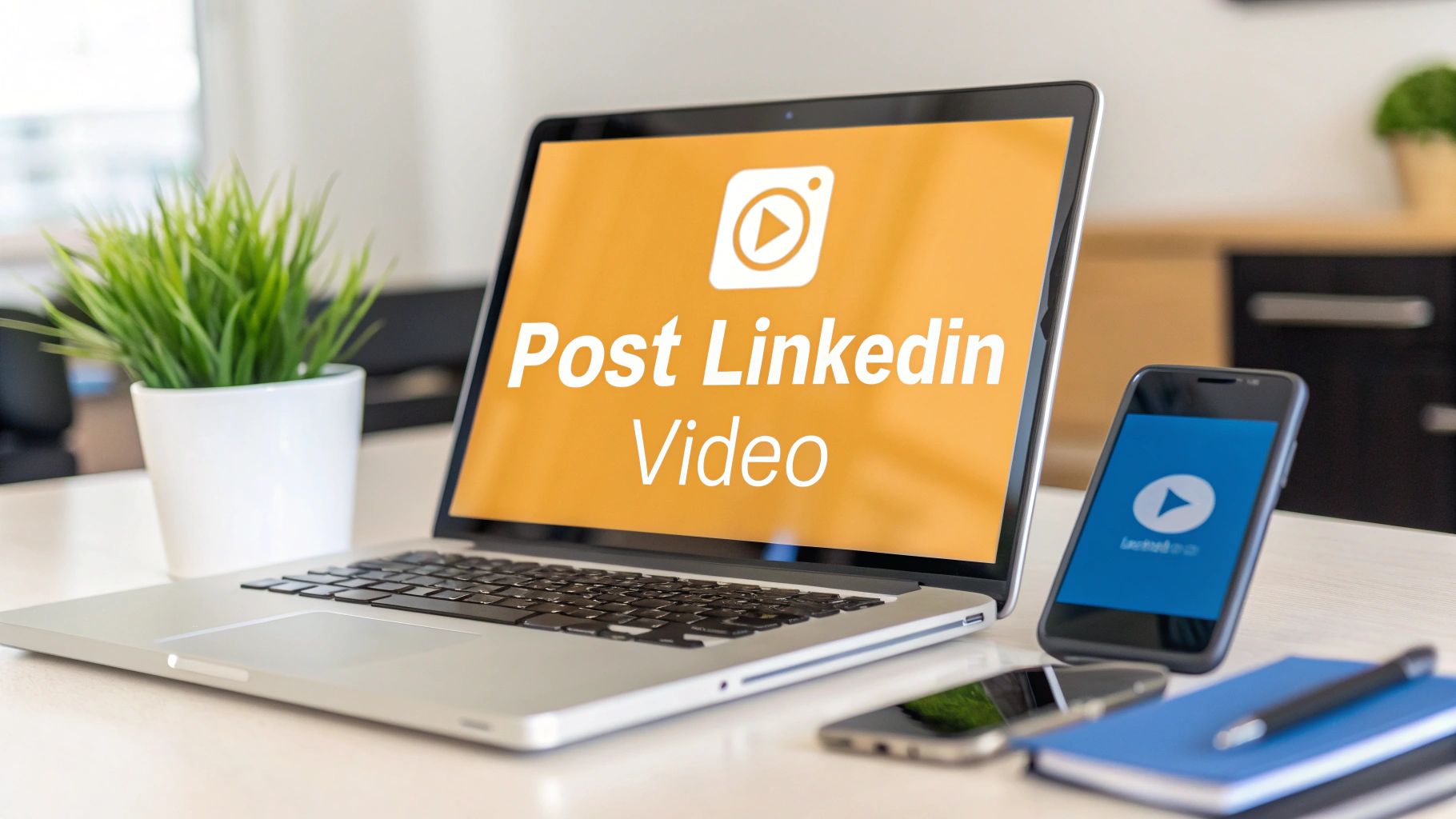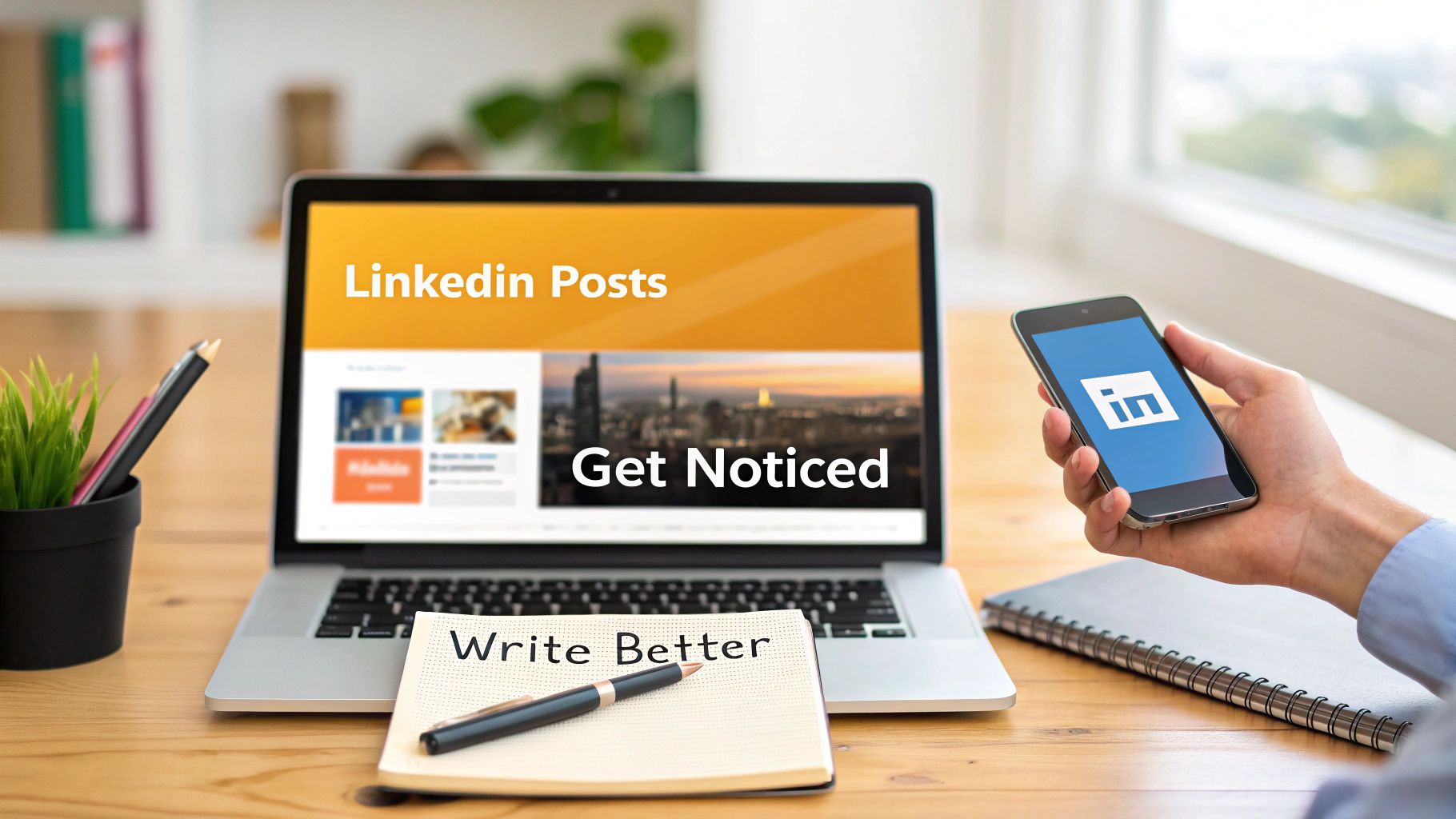Ever wondered how to actually connect on LinkedIn in a way that gets real results? It’s pretty simple: stop thinking about collecting contacts and start building genuine, professional relationships. This means ditching the generic 'Connect' button and taking a few moments to write a thoughtful, personalized invitation. It's the difference between starting a real conversation and just adding another face to your list.
Stop Collecting Connections, Start Building Relationships
Let's be real for a second. We've all been tempted to just hit 'Connect' without a second thought. It's quick, it's easy, but it almost never leads to anything meaningful. Sure, a high connection count might stroke the ego, but it’s a vanity metric if none of those people know who you are or why you wanted to connect in the first place. The real magic of LinkedIn happens when you use it to build authentic professional relationships.
This guide is designed to cut through all the generic advice you’ve heard before. I'm going to show you how to turn a simple connection request into a genuine conversation starter, opening doors to new collaborations and career opportunities. We're skipping the spammy, automated outreach and focusing on the human-to-human approach that actually works.

The Mindset Shift: From Quantity to Quality
The goal isn't to have the most connections. It’s to have the right connections. A smaller, highly engaged network of people who are relevant to your career is infinitely more valuable than thousands of random contacts. Adopting this quality-over-quantity mindset means your feed will be filled with useful insights, and your messages will actually get read and answered.
This shift takes a bit more thought and strategy. It’s less of a numbers game and more about being intentional with your outreach. If you're new to this idea, getting a solid grasp on https://redactai.io/blog/what-is-professional-networking is a fantastic place to start.
Your LinkedIn network should be a curated group of professional allies, mentors, and peers—not a digital rolodex of strangers. Think of each connection as a potential conversation, not just another number.
This approach flips LinkedIn from a passive online resume into an active tool for your professional growth. It positions you as a thoughtful professional who values real interaction, which is the heart of great networking. Getting this mindset right is the foundation for every successful connection you'll make on the platform.
Get Your Profile in Shape Before You Send a Single Request
Before you even think about hitting that "Connect" button, let's talk about your own profile. It’s your digital handshake, and it needs to be solid. The very first thing anyone does when they get a request from a stranger? They click on your name to see who you are.
What they find needs to make them want to connect. Sending requests with a half-baked profile is like showing up to a networking event in sweatpants—it just screams that you don't take it seriously. Your profile is your personal landing page, and it has to do the heavy lifting for you.

What to Focus On First
A strong profile isn't just about listing your jobs. It's about telling a story. If you want to make an immediate impact, start by polishing these key areas.
- A Solid Headshot: This is non-negotiable. A professional, clear photo where you look approachable is a must. Seriously, profiles with a great headshot get up to 21 times more views.
- A Compelling Headline: Don't just put your job title. That's prime real estate! Tell people what you do and the value you bring. Instead of "Sales Manager," think bigger: "Sales Manager | Helping SaaS Companies Scale Revenue & Build Winning Teams."
- A Story-Driven About Section: This is your spot to really connect with people. Tell your professional story, weaving in your key skills and even a bit of your personality. It's your elevator pitch.
A polished profile builds instant trust. It shows you're a serious professional who cares about the details, which makes people way more likely to hit 'Accept.'
Nailing these elements is a game-changer. For a step-by-step walkthrough, check out our guide on https://redactai.io/blog/how-to-edit-linkedin-profile.
And if you want to make sure your profile is firing on all cylinders, this LinkedIn Profile Optimization guide is an incredible resource. Trust me, spending time on your profile now will pay off big time when you start reaching out.
Find the Right Professionals for Your Network
Building a strong LinkedIn network isn't about collecting random connections—it's about quality over quantity. If you're trying to figure out how to connect on LinkedIn in a way that actually helps your career, the first rule is to stop blindly hitting that "Connect" button. It’s the fastest way to get ignored and waste your energy.
So, let's get intentional. A great place to start is with LinkedIn’s own search filters. Think about what you're trying to accomplish. Are you looking for a mentor? A potential client? Maybe just someone to bounce ideas off of in your industry? Use the filters for industry, company, and job title to really zero in on the exact people who fit your goals. This targeted approach makes every request you send feel relevant and purposeful.
Go Beyond the Cold Outreach
Direct searching is solid, but nothing beats a warm introduction. Warm connections are the ones that have a built-in reason for someone to hit "accept"—you already have something in common.
Here are a few goldmines for finding those warmer connections:
- Shared Connections: Always check who your current contacts know. Seeing that you have a mutual connection is a huge trust signal.
- Alumni Networks: Your school’s alumni network is an incredibly powerful, and often overlooked, resource. That shared history creates an instant bond.
- Industry Groups: Find and join a few groups related to your field. Jump into discussions and add your two cents. You’ll become a familiar face before you even send a single request.
A targeted approach ensures every connection you make has the potential to grow into a mutually beneficial professional relationship, making your network a genuine asset.
Laying this strategic groundwork shifts your networking from a numbers game to a relationship-building one. If you want to expand your search even further, you can explore methods like learning how to scrape LinkedIn contacts from Google Search to identify a larger pool of relevant people.
It's easy to forget just how massive LinkedIn is. Since it kicked off in 2003, it's ballooned into the largest professional networking platform on the planet, boasting over 1 billion users in more than 200 countries. That incredible reach means the right people are definitely out there—you just have to connect with them thoughtfully. For more cool stats, check out these insights on LinkedIn's global user base.
Craft Connection Requests That Actually Get Accepted
Sending a blank connection request is like walking up to someone at a conference, shoving your business card in their hand, and walking away without a word. It's awkward, impersonal, and instantly forgettable. Your secret weapon? The personalized note.
This tiny bit of effort is what separates you from the noise. A short, thoughtful message shows you've actually looked at their profile and you respect their time. This single change can skyrocket your acceptance rate because it gives them a reason to care. People want to know why you're reaching out.
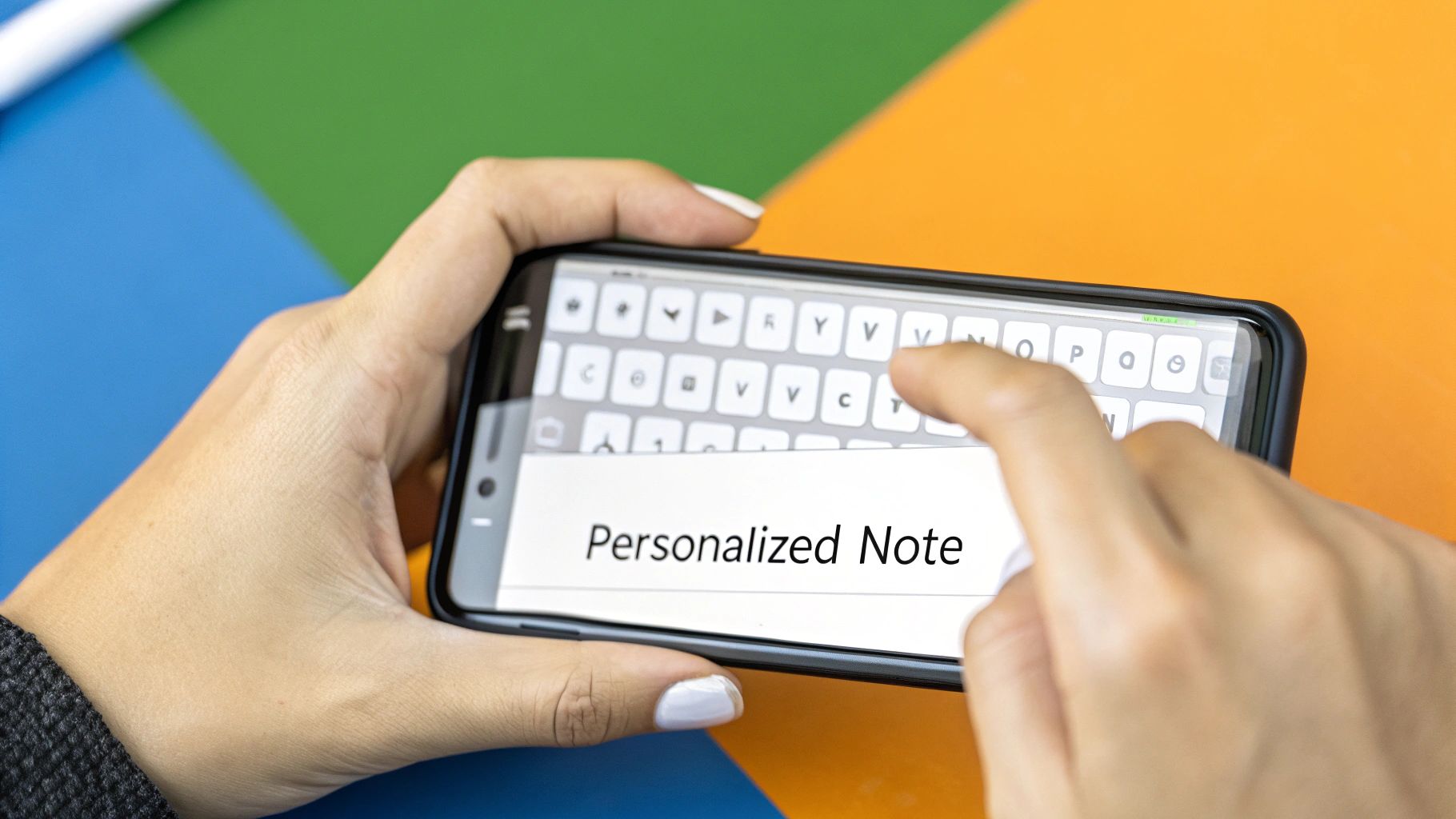
A Simple Framework: Context, Value, and a Soft Ask
If you're worried about rambling or not knowing what to say, just stick to this simple, three-part structure. It keeps your message tight and effective.
Context: Kick things off by explaining how you found them. This creates an instant connection. Maybe you were in the same breakout room at a conference, or you saw their comment on a shared connection's post. For example: "Hi James, I saw your great question in the SEO for SaaS webinar earlier today."
Value/Admiration: Follow up with a genuine compliment or mention something specific you admire. This proves you're not just blasting out a generic template. Something like: "Your point about long-tail keywords for early-stage startups was a real lightbulb moment for me."
The Ask: Keep it simple and low-pressure. The goal here is just to connect, not to book a sales call. A simple: "I'd love to connect and follow your work." is perfect.
This little framework turns a cold outreach into a warm, professional handshake. It's about being a real person who shows genuine interest.
The best connection requests are never about what you want from them. They're about establishing a mutual point of interest that can grow into a real professional relationship.
Think about the requests you actually accept. I bet they're the ones that feel personal, not like a sales pitch waiting to pounce. Don't make it all about you or ask for a favor right out of the gate—that's the fastest way to get ignored. Keep it short, respectful, and focused on them. This simple shift is the key if you really want to understand how do you connect on LinkedIn and build a network that matters.
Turn New Connections into Active Relationships
So, you sent the request and they accepted. That little notification is a great start, but it's not the end of the road. Far from it. This is where the real work—and the real opportunity—begins. You’re not just collecting names; you’re building a network of actual relationships.
Your first move? A simple thank-you message. This isn't the time for a sales pitch or a request to "hop on a quick call." Just send a short, genuine note. Something like, "Thanks for connecting, Alex! I really enjoyed your recent post on project management tools. Looking forward to following your insights," is perfect. It shows you're paying attention and that there's a real person behind the profile.

Stay on Their Radar (Without Being a Pest)
After that first message, the goal is to stay visible without being annoying. Don’t start spamming their inbox every week. Instead, focus on engaging with what they’re already putting out there.
- Like their posts. It’s quick, easy, and a simple nod that you're seeing their content.
- Leave a thoughtful comment. This is where you can really shine. Go beyond "Great post!" and add your own perspective. Ask a smart question or share a relevant experience. It makes a huge difference.
- Share their content. If you find something they posted genuinely useful and think your own network would benefit, sharing it is one of the highest compliments you can give on the platform.
Building real rapport doesn’t happen overnight. It’s all about these small, consistent actions that build trust and familiarity over time. This is what lays the groundwork for real collaboration down the line.
Look, this takes a little effort. That's why having solid relationship building skills is a massive advantage in any career. Remember, the average person on LinkedIn is only on for about 7 minutes and 31 seconds a day, but 40% of active users are logging in daily. Your thoughtful interactions have a solid chance of getting noticed. For more on this, check out some LinkedIn user stats over at 99firms.com.
It's these consistent, small touchpoints that transform a static connection into a living, breathing professional relationship.
Got Questions About LinkedIn Connections? We’ve Got Answers.
Even the most seasoned LinkedIn pros run into situations that make them pause. When you're trying to build your network, a few common questions always seem to pop up. Let's tackle some of those tricky scenarios I get asked about all the time.
Is It Really Okay to Connect with People I Don’t Know?
Yes! But there's a huge "if" attached: if you do it right. The golden rule is to never, ever send a blank connection request to someone you don't know. It's the digital equivalent of walking up to a stranger and just staring at them—it's weird and often gets ignored.
The secret is giving them instant context. Your personalized note needs to answer the "why you?" question. Did you love a talk they gave? Are you both part of the same niche community? Do you admire a project they led? A thoughtful, specific reason shows you’ve put in a little effort and aren’t just spamming for numbers.
What if They Don't Accept My Request?
First off, don't take it personally. It happens to literally everyone. People are swamped, they might miss the notification, or they may have a strict "I only connect with people I've met" policy. Whatever the reason, the worst thing you can do is get pushy.
Pro tip: Never send a follow-up message asking why they didn't accept. Instead, just hit the 'Follow' button on their profile.
Following is a fantastic, low-stakes way to stay in their orbit. You'll see their public posts, and you can engage with their content by leaving thoughtful comments. It’s a non-intrusive way to build familiarity and show you’re genuinely interested in what they have to say.
How Many Connection Requests Are Too Many?
This one's easy: it’s always about quality, not quantity. Sending 5–10 highly personalized and well-researched requests in a week will get you much further than firing off 100 generic ones. I’ve seen this work time and time again.
When you slow down and focus, you give yourself the space to do what actually matters:
- Dig into their profile to find that genuine spark or common ground.
- Write a message that sounds like you and is written just for them.
- Be ready to start a real conversation once they accept.
This approach doesn't just get you a higher acceptance rate; it helps you build a network of meaningful relationships that can actually help you down the road.
Ready to create compelling LinkedIn content that sparks conversations and builds your brand? RedactAI helps you generate authentic, high-impact posts in your unique voice, ensuring you always have something valuable to share. Start creating for free and see the difference.



